

Welcome to my portfolio
am a Graduate with a Distinction in MA International Relations, Conflict and Security and First Class Honours in BA (Hons) Design for Industry from Northumbria University. have professional experience as a Design Engineer Intern, and an Industrial Design and User Experience Intern.
have worked across a range of projects, briefs and academic disciplines, in multidisciplinary environments. Whilst my experiences may seem unrelated, the diagram on the right demonstrates commonality in skills that are highly applicable to a range of roles.
Design’s pillars (usability, feasability, viability and desirability), learnt from my BA and time in industry, were applicable to my political studies, especially policy and its principles of clear communication and feasible decision-making.
This portfolio is a collection of several projects that I completed during my time at Northumbria, with additional details about my employment.
Thank you for taking the time to read this.
Industrial Design
Critical Analysis
Attention to Detail
Rigorous Research
Synthesis of Information
Complex Problem Solving
Translation of Technical Data
Multidisciplinary Cooperation
Insight Driven Deliverables
Systems Thinking
Design Thinking
Strategic Focus
MA International Relations
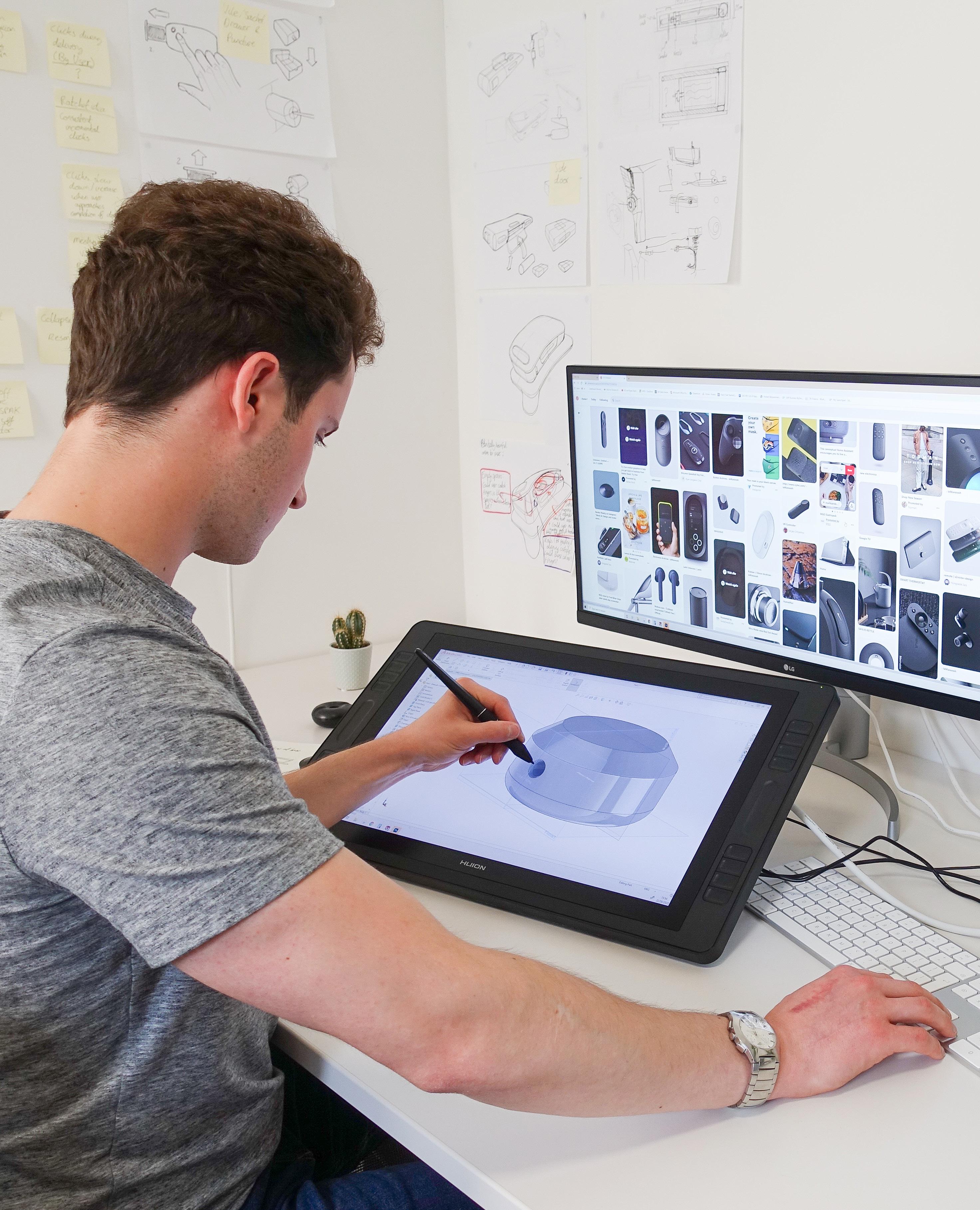
Internships
Orthoson Ltd. - 2022/23
Orthoson is an Oxford based medical device company focussed on developing novel technologies and products to relieve chronic lower back pain through the restoration of spinal function.
My work included:
• Early stage concept development through sketchwork and CAD for a novel implant preparation system and affiliate products
• Producing a range of GUI concepts to consider product-user interactions
• Heavy involvement in human factors analysis and regular production of detailed workflows to identify possible pain points within the process of manufacturing the device, delivering all components to location of procedure and the process of preparing the implant ahead of surgery
• Detailed CAD modelling for design for manufacture of the device
Due to the NDA I signed, I am unable to show, nor discuss the specifics of the work completed at Orthoson. For more information on Orthoson Ltd, please find their website with the following link: https://www.orthoson.com/
David Robinson Design - 2020
David Robinson is a freelance Industrial Design Consultant working primarily in medical design.
I was involved in projects including work for an undisclosable diagnostic development company, early stage product development for a wearable injector, and graphic design contributing towards the launch of a new design company.
Due to the NDA I signed, I am unable to show, nor discuss the specifics of the work completed at David Robinson Design. For more information on the type of work David Robinson is involved with, please find his website with the following link: https://www.davidrobinsondesign.co.uk
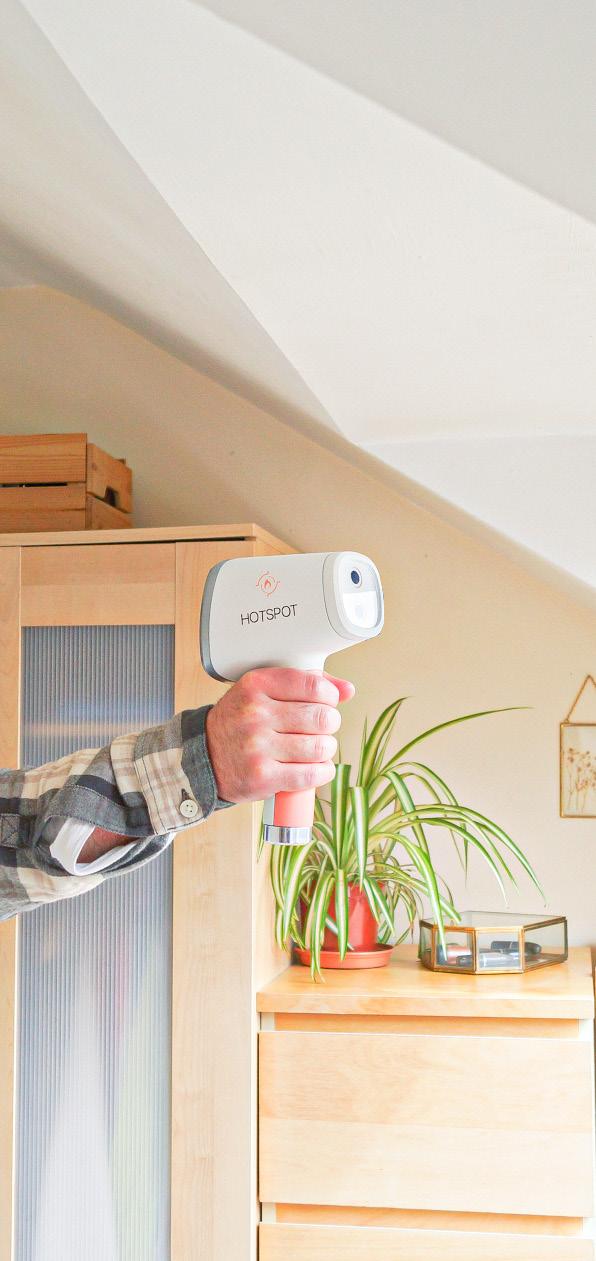
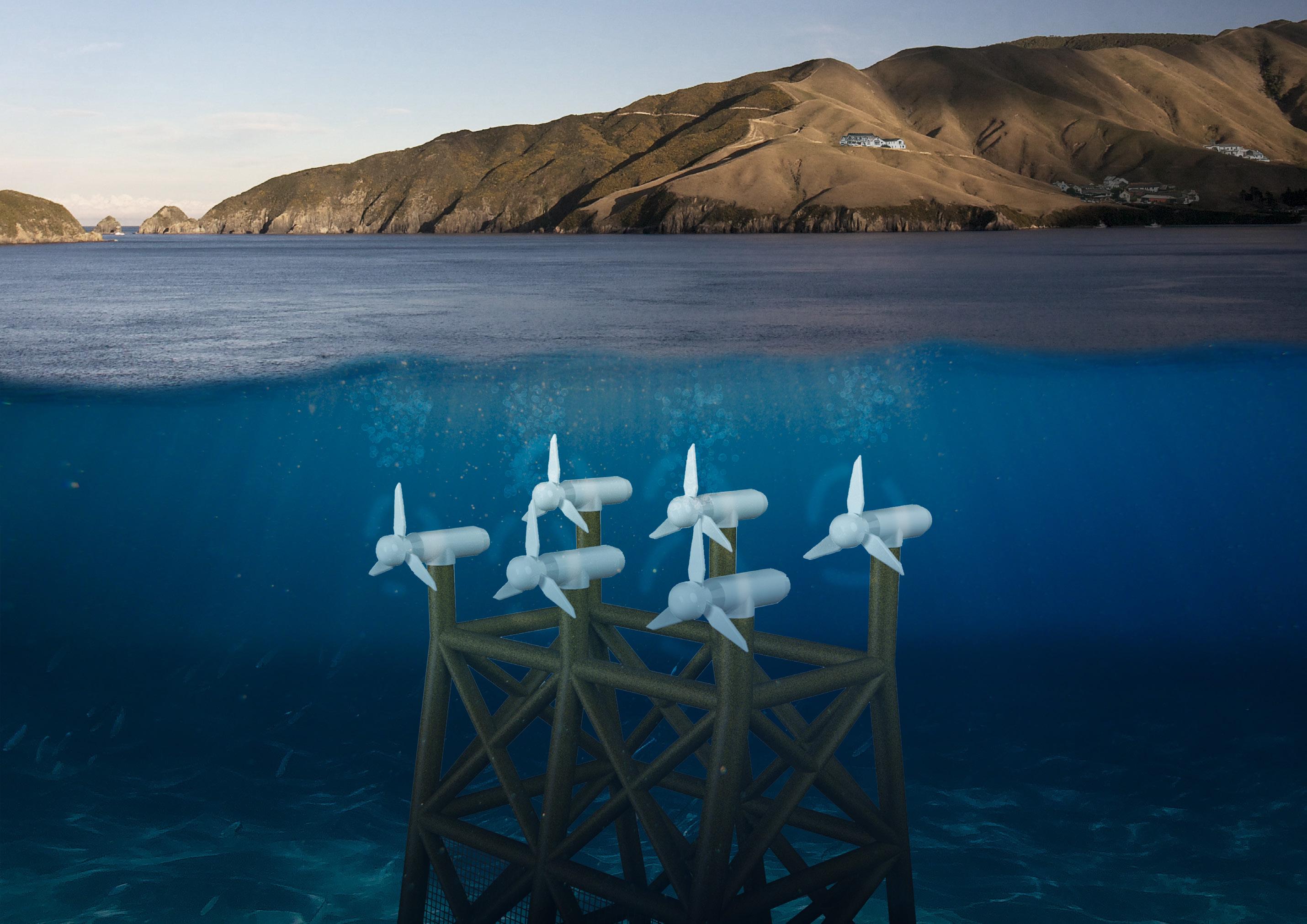
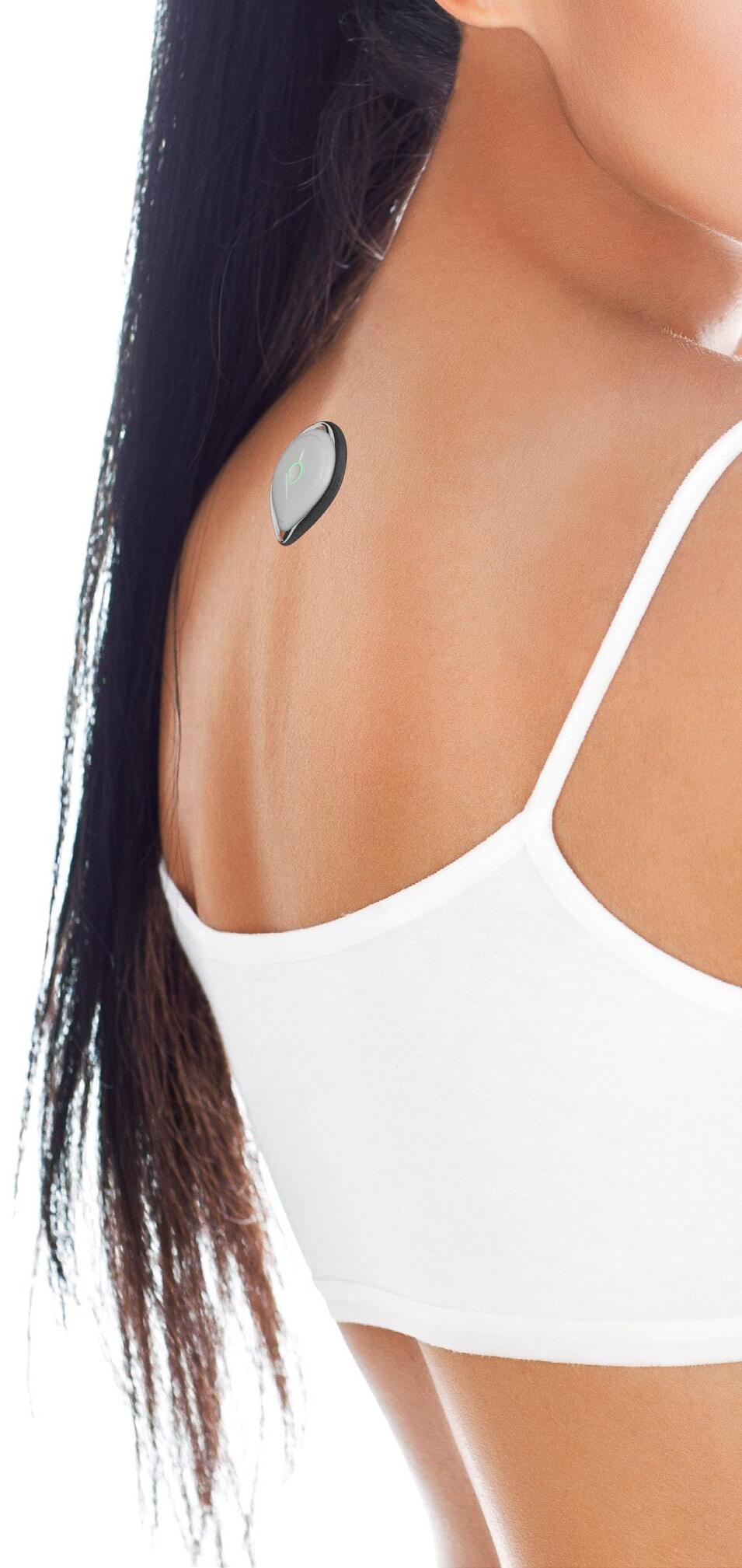

HOTSPOT
HOTSPOT is my final major project for my BA (Hons) Design for Industry.
Marketed towards homeowners looking to minimise heat loss in their homes, HOTSPOT is a portable home scanning device that enables homeowners to identify heat loss more easily and accurately. This is achieved by delivering professional thermographic technology without the need for professional training.
Watch the video here:

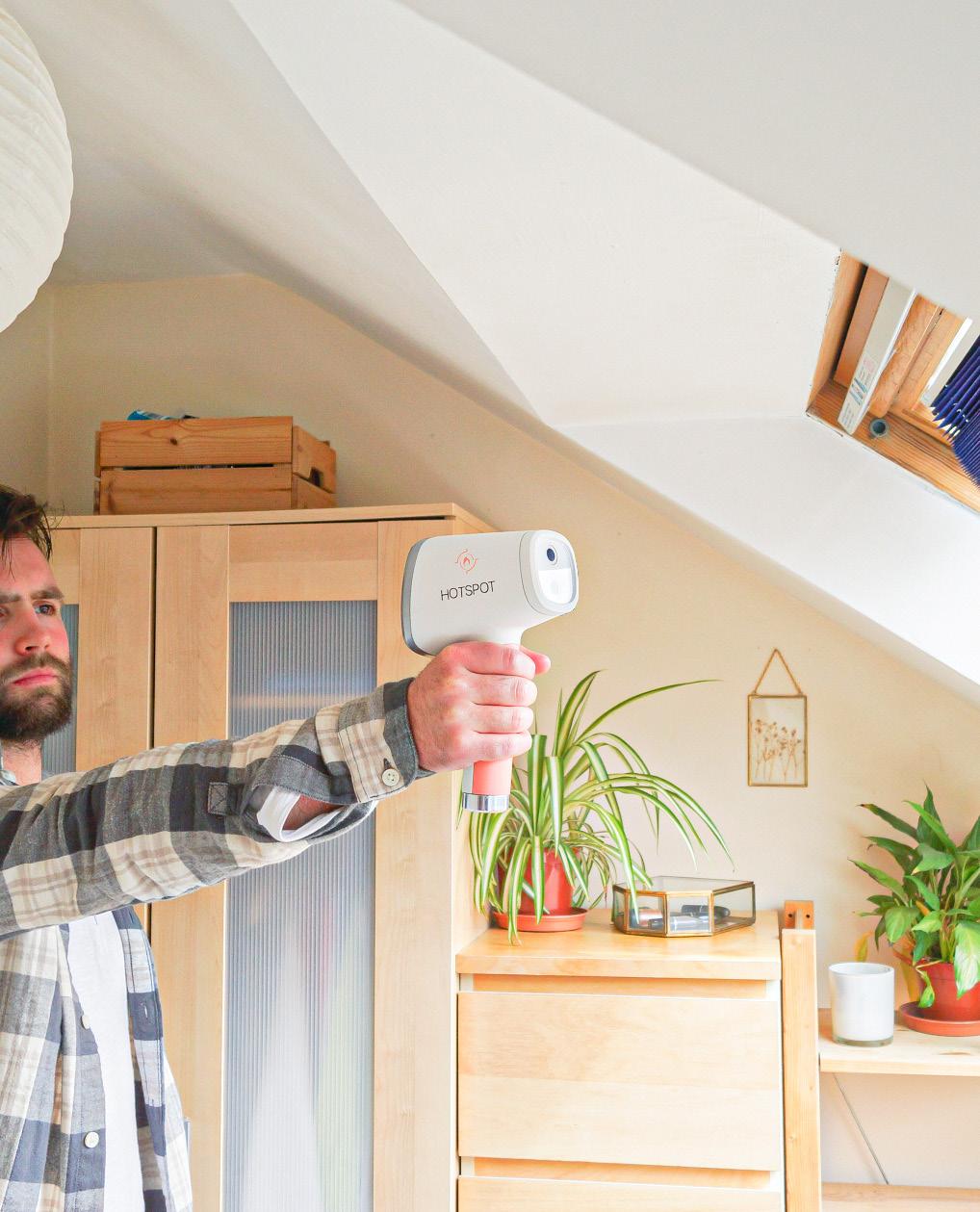
“UK housing stock is one of the oldest and worst insulated in Europe, with only around 15% of existing stock built since 1990. Most homes are expected to still be in place in 2050.” The Climate Change Committee
“Government data shows that draughts cause about 25% of all heat loss from the average house... a quarter of the household gas bill is disappearing through such places as cracks in doors, holes around water pipes and gaps around window frames.”Carbon Commentary
The UK housing stock’s thermal retention is unacceptable and requires serious re-evaluation. This has been greater emphasised by the recent energy crisis, resulting in millions of homes entering into fuel poverty.

Cultural Probe
After conducting secondary research determining that heat loss is the largest contributor to domestic energy consumption, carried out a Cultural Probe on four participants to investigate people’s home heating habits.
Each participant was a different age and had a different household status, providing a variety of behavioural examples.
Limitations
As stated in my assessment feedback, the economic backgrounds were of quite comfortable salaries and therefore not representative of the wider population.
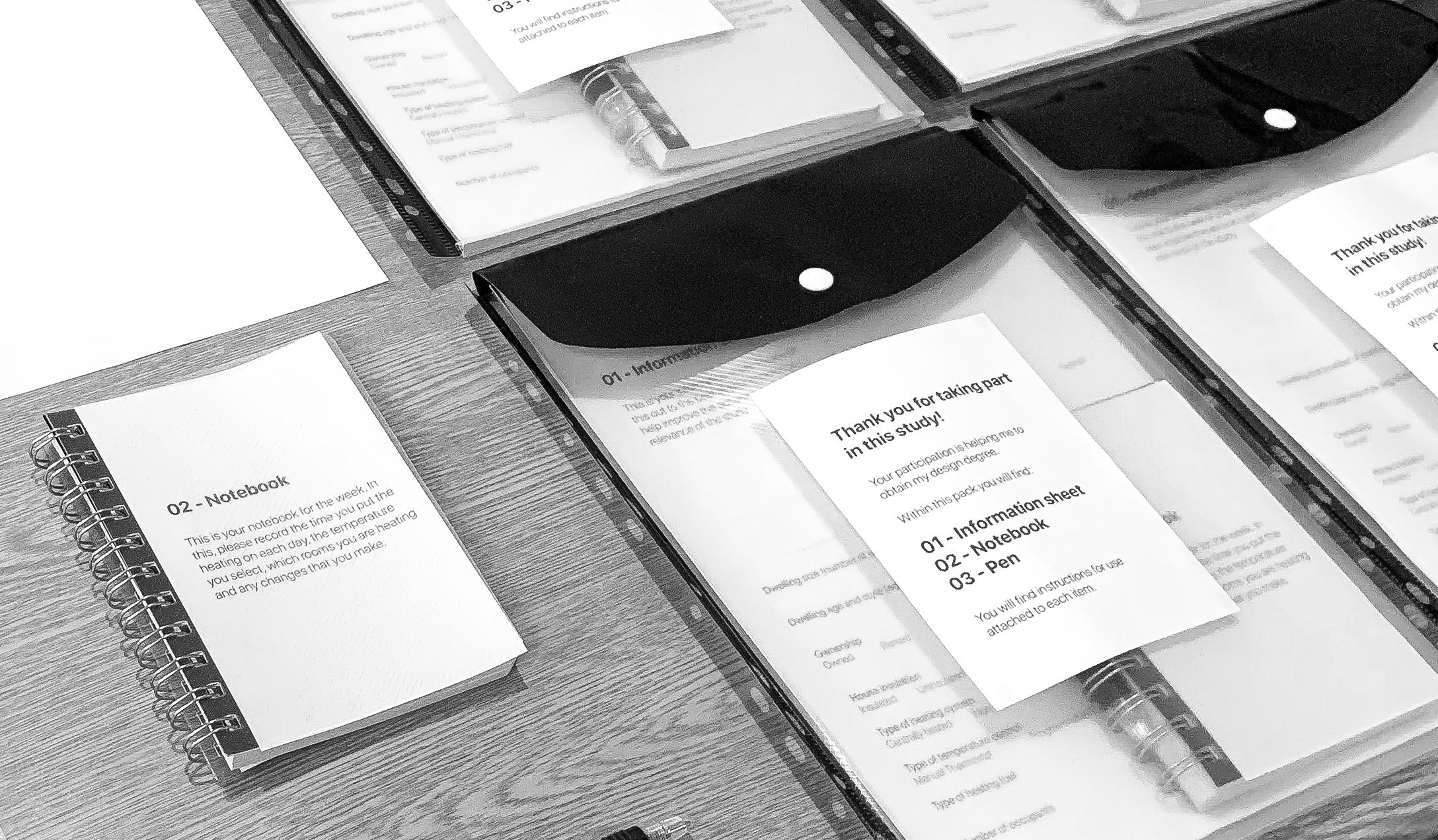

Thematic Analysis
identified four key themes across the participants:
1. We plan our heating but this is wasteful as we use it to feel the effects later.
2. Adequate insulation is vital in minimising large-scale heat loss.
3. Current service provision is not good enough, some providers simply refuse to retrofit certain properties.
4. Residents are motivated by a combination of environmental and financial factors.


Proposal

A home scanning device that enables homeowners to identify heat loss in the home more easily and accurately.
This is achieved by delivering professional thermographic infrared technology without the need for professional training.
Artificial intelligence image recognition is used to determine why heat loss is occurring and suggest what can be done about it (chosen through the app).
A professional service team analyses the results and customer choices, helping the homeowner to understand the changes before making them.
As a short-term rental product, HOTSPOT offsets the extreme costs associated with property diagnostics.
This affordability and customisable interventions mean that whether you’re a first time buyer or long-term owner, anyone can cut down on heat loss in the home.
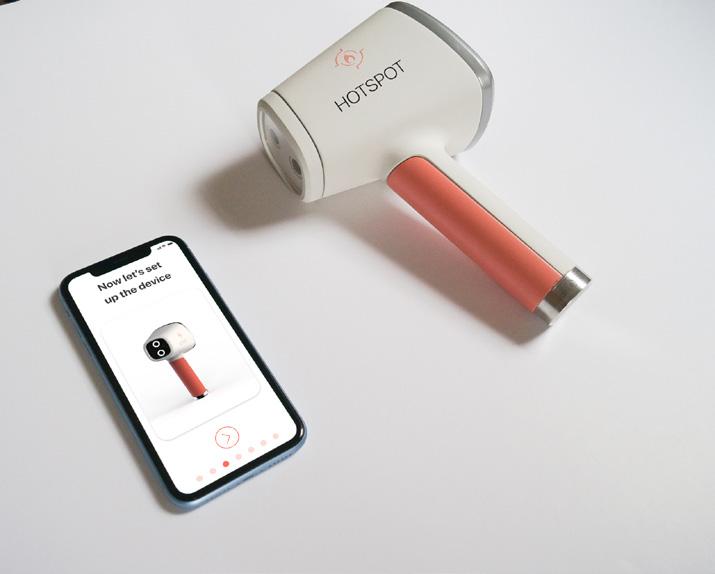
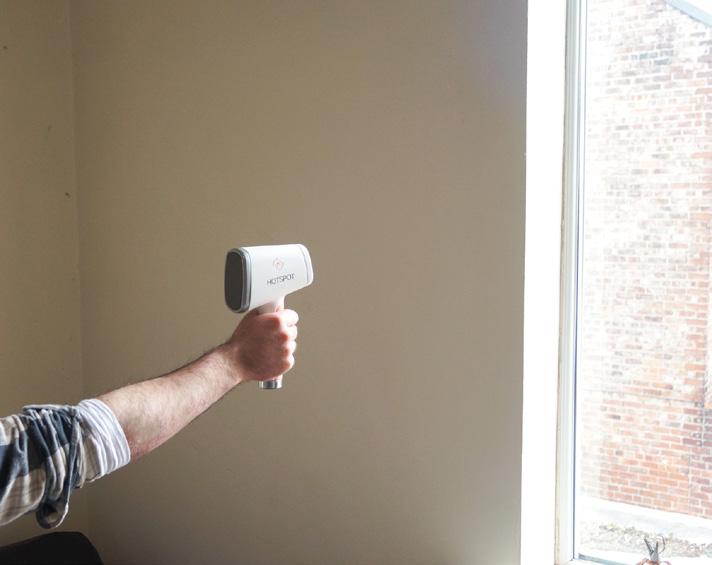
The customer pairs their HOTSPOT device with the mobile app. They use the device to methodically discover heat loss in each room of their house. Starting with the doors, then the floors and the windows then the walls.
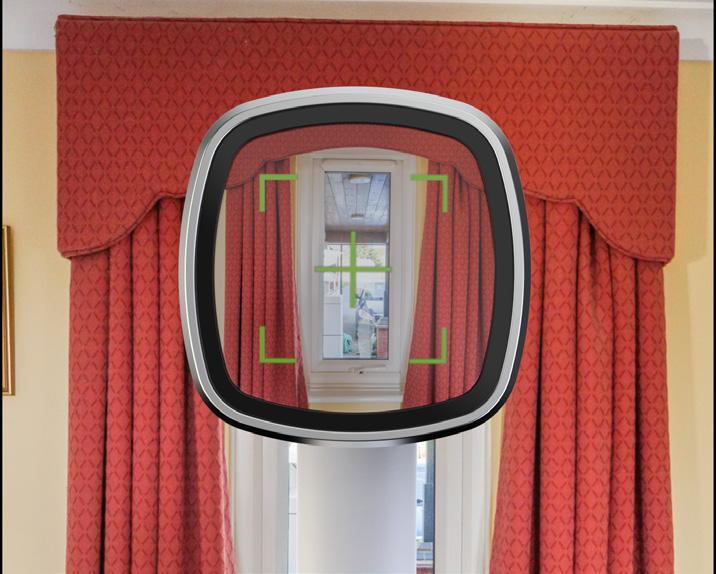
When each scan is complete, the reticle turns green to confirm this and the scan is automatically uploaded to the app.
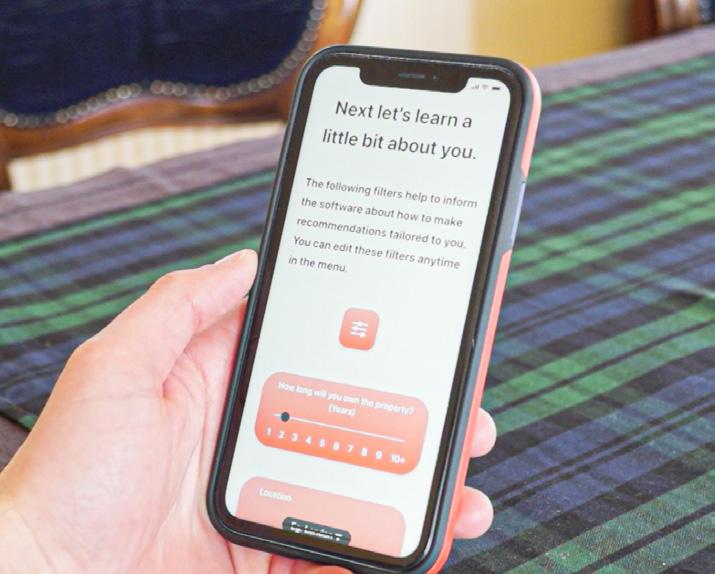
In the app, the user sets personal filters such as location to assist the AI recommendations. The user then reviews the results of the scan and the AI’s recommendations.

They choose the best recommendations based on their own circumstances, and upload them to their customer portal. The service team reviews these results and options.
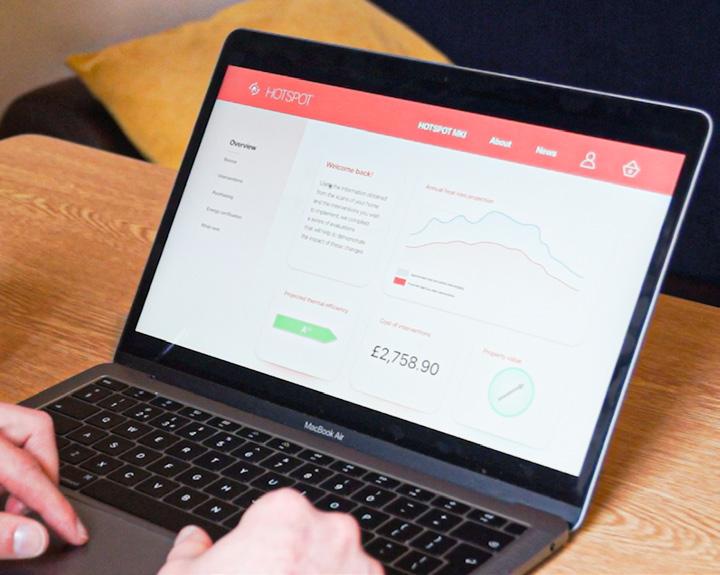
The user is sent a report to understand the impact of their desired changes and advice from the service provider. Once satisfied, the user returns the product and begins to implement home changes.

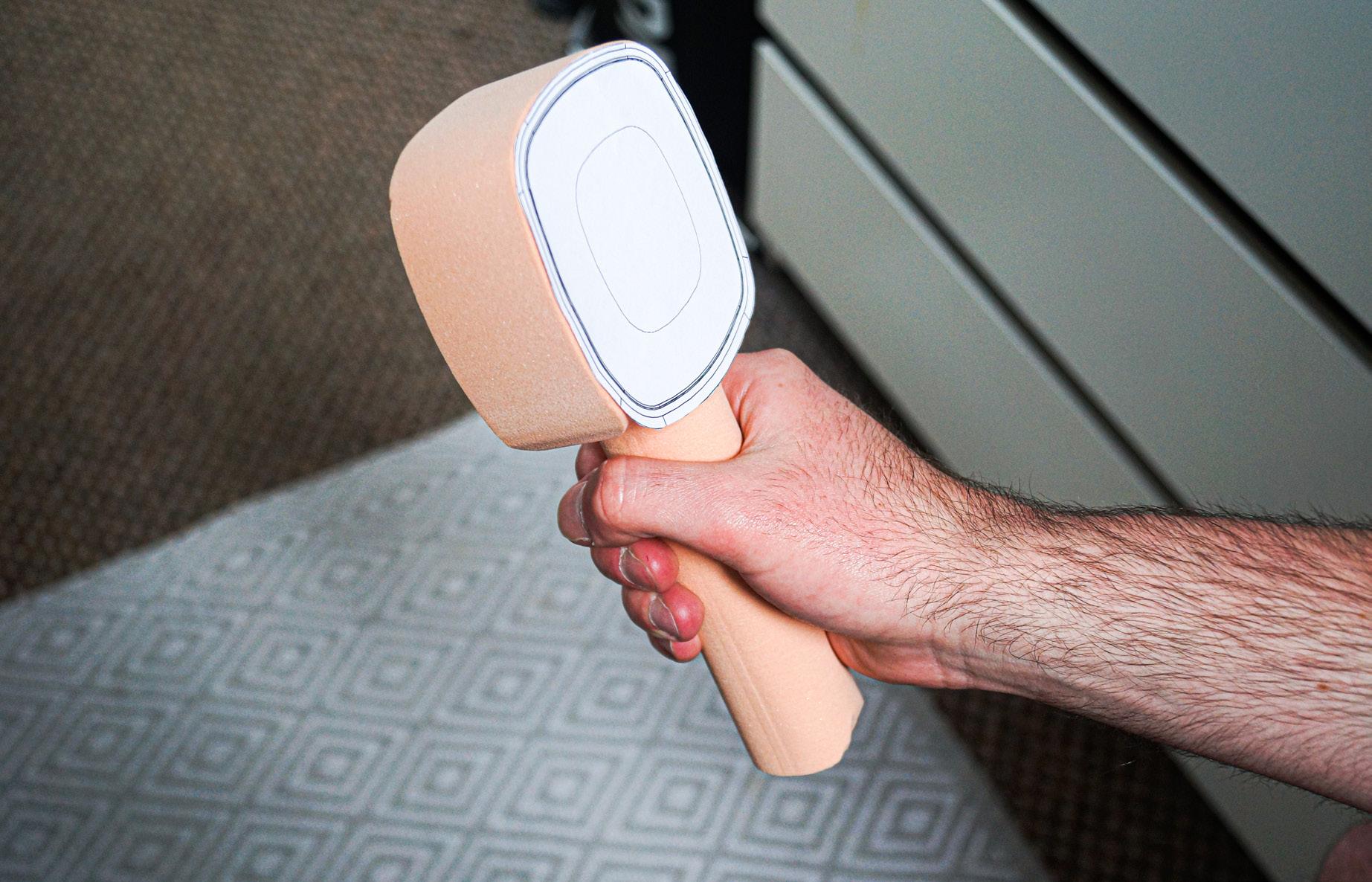
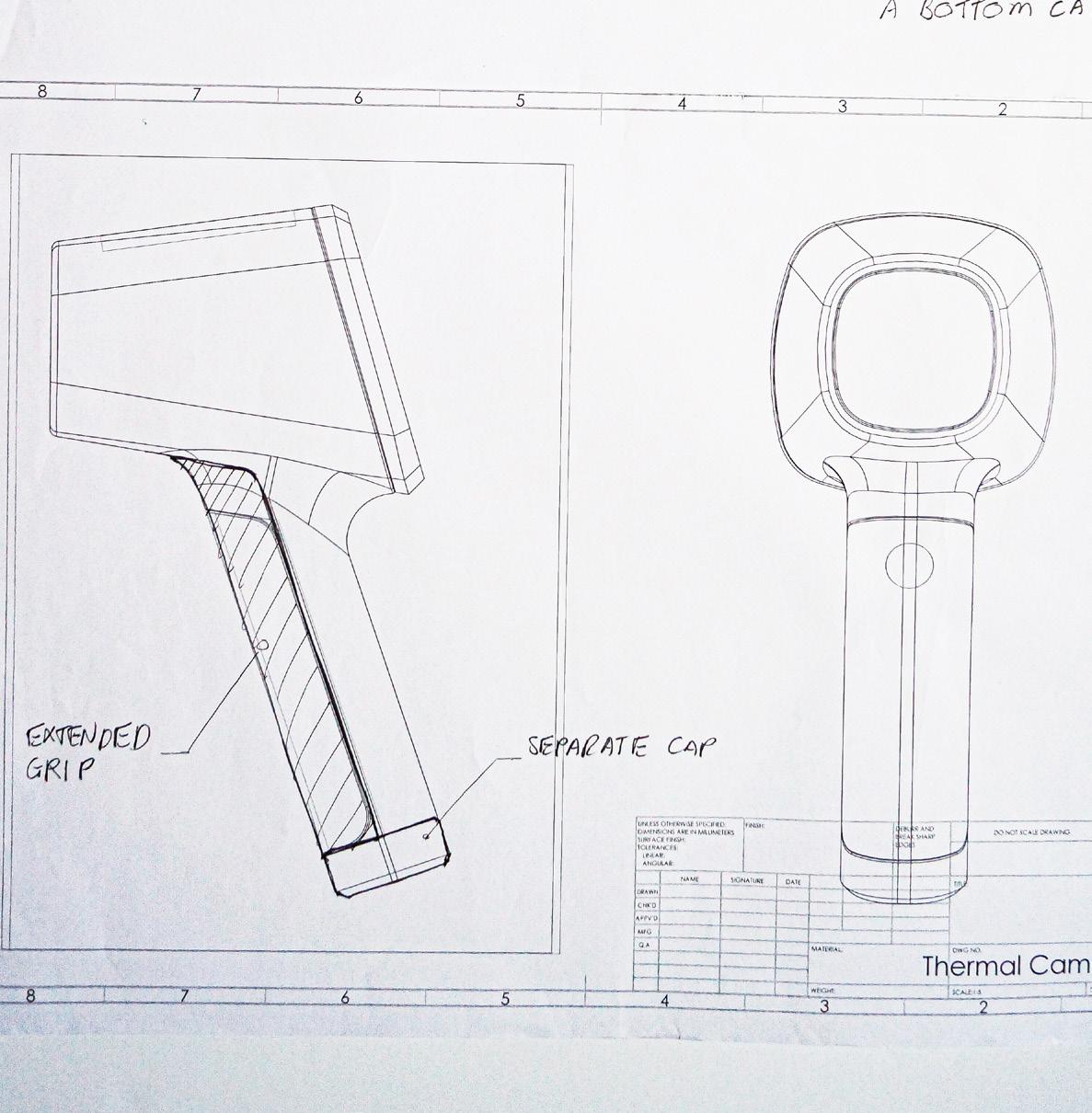


Product language refinement through sketching, physical prototypes, CAD (Solidworks), ergonomic testing and iteration, and exploration of colours, materials and finishes using Keyshot.
Service Mapping, Blueprints and Strategy
produced service blueprints, breaking down each individual section and using physical prototypes to visualise how the proposal linked together. This was very affective in allowing me to sense-check how the user progressed through the service and to identify any potential missteps in navigational and informational processes.
To better understand how the customer would use the product and service to best effect, in addition to promoting service feasibility and viability, it was also important to develop a business model and purchasing structure for the proposal. used a variety of methods including visualisation techniques to see how a companies such as Google or Amazon would structure their models.

Prototype Testing and Iteration
To develop the service’s touchpoints, produced various iterations of low and high-fidelity wireframes and prototypes. These prototypes were then tested and critiqued, simulating customer experiences and providing feedback on functionality and styling.
For example, when discussing the results page, one of the participants expressed confusion about navigating the different scan displays. When explained that it was navigated through a horizontal scroll, this was not obvious to him. As a result he provided the suggestion of making the images left and right slightly smaller to promote this.



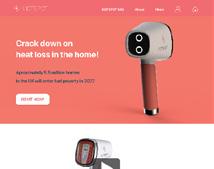
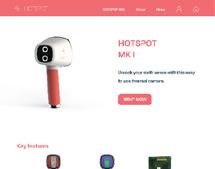





Final Design
The overall aesthetic is designed to be welcoming with warm coral notes. Additionally the white emphasizes neutrality.
The body of the product is ABS for its durability as the product will likely be knocked and maybe dropped by the customer.
The grip is a slightly textured silicone for improved grip. The screen bezel and control dial are both Aluminium to draw the user’s attention to the paramount functions.
Both camera lenses are encircled by a soft glowing LED ring which turns on to communicate to the user that the product is on.


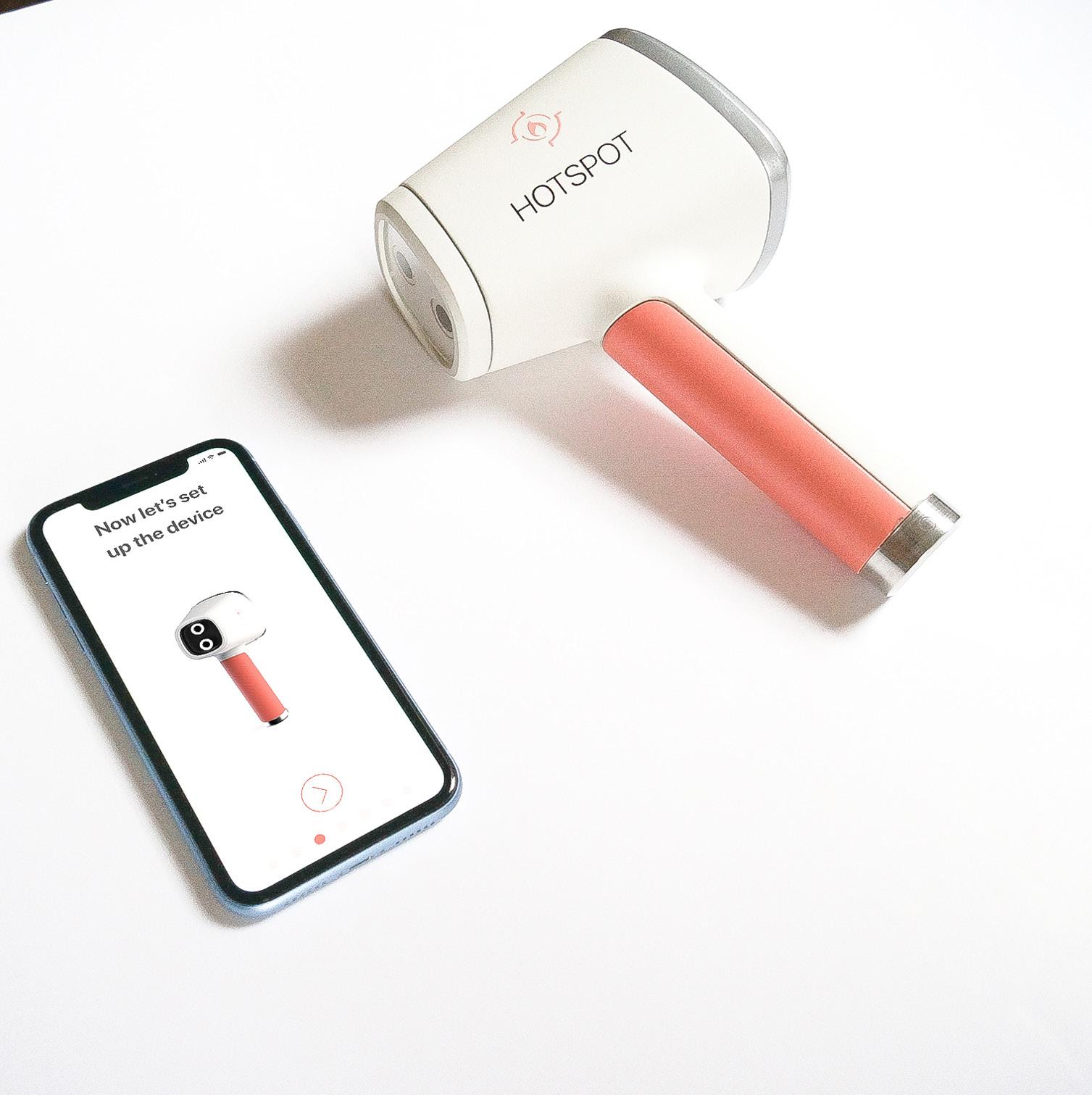
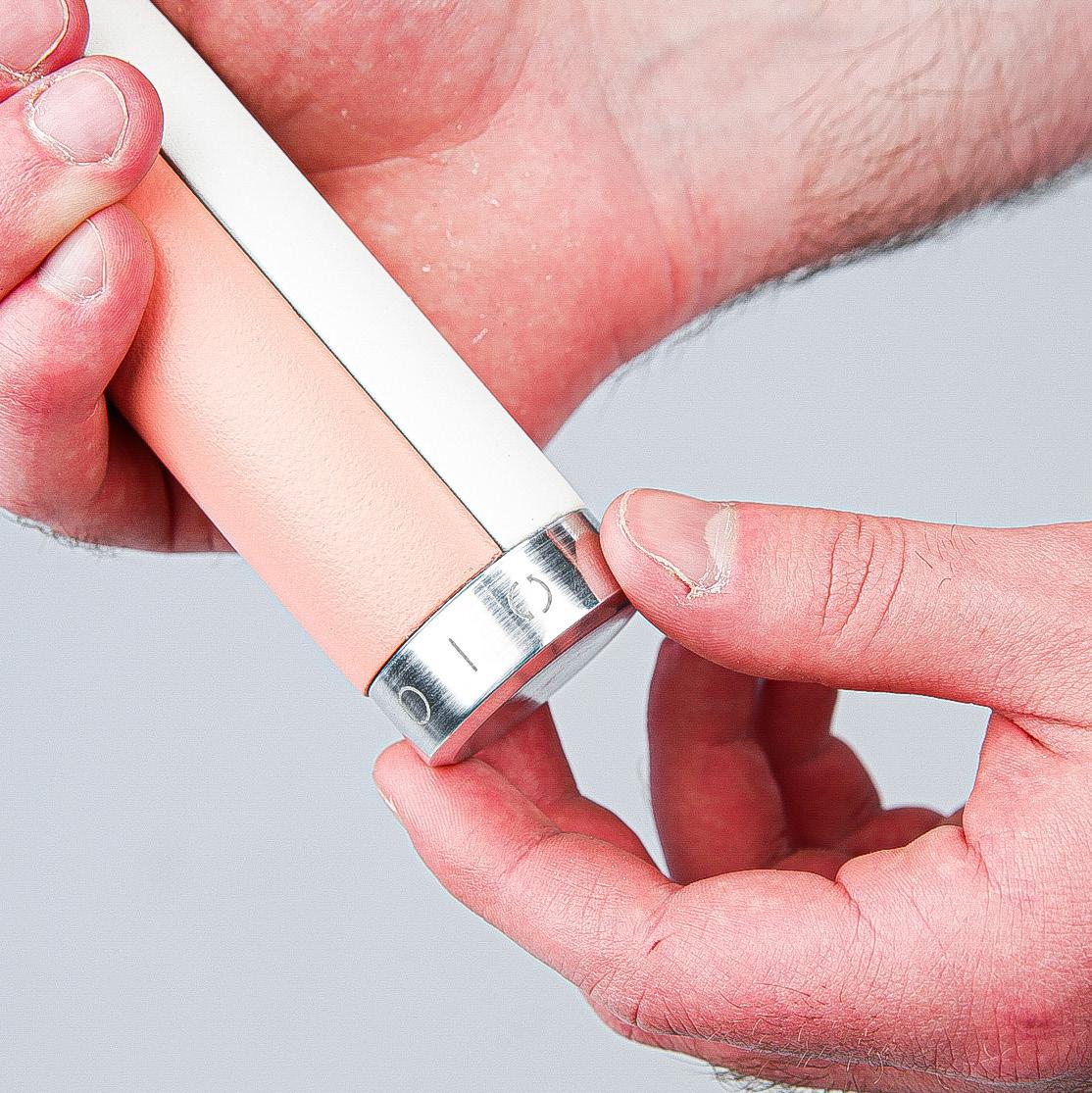
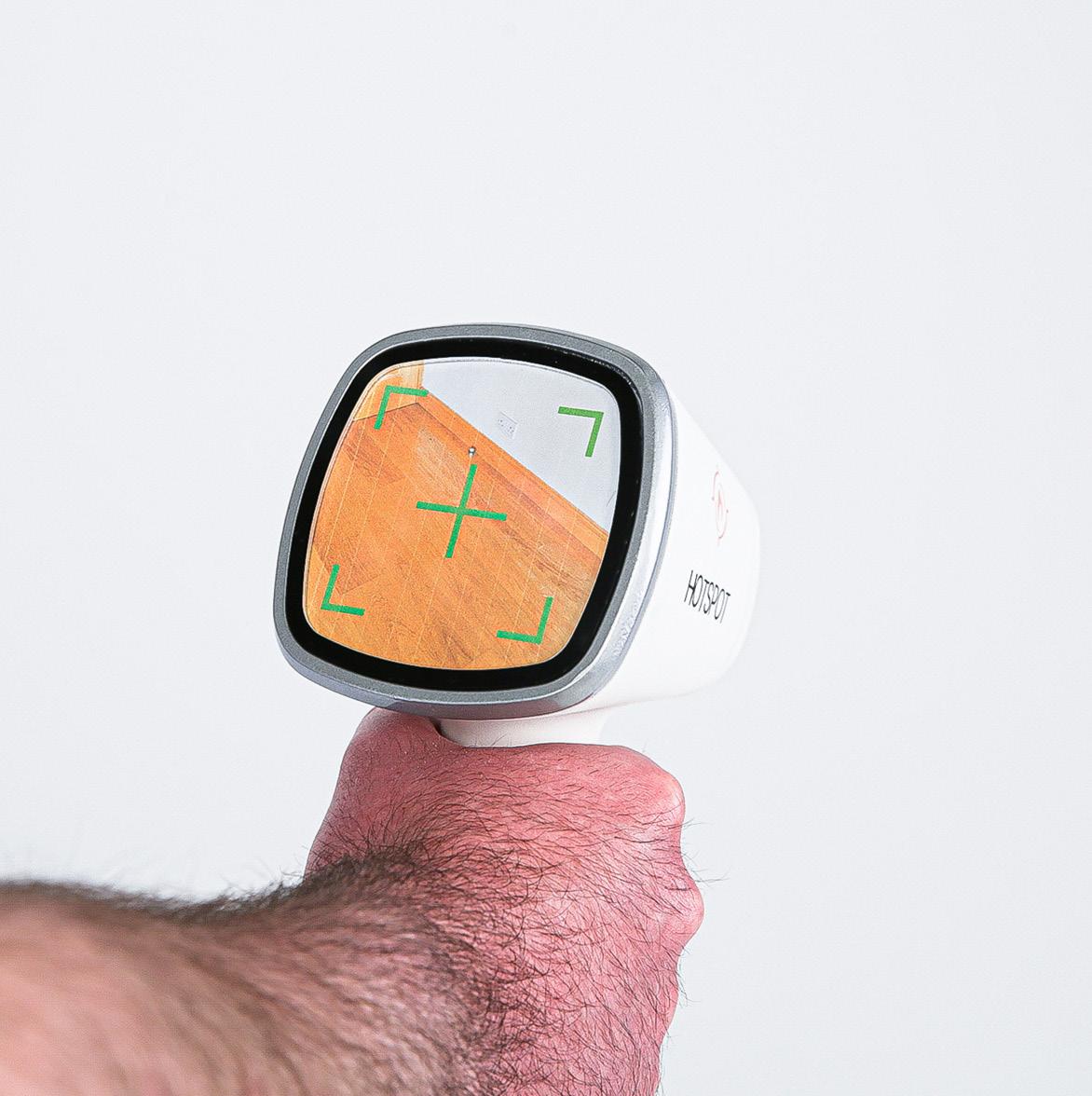
Lens cover
LED rings
Front cluster housing
Main body
IR camera module
IR camera shutter
IR camera photosensor
IR camera PCB daughterboard
Standard camera module
Standard camera shutter
Standard camera photosensor
Standard camera PCB daughterboard
Camera cluster housing
Main PCB
Screen housing
LCD backplate
LCD screen
Screen protector
Screen border
Handle grip
Battery cluster
Handle
Potentiometer PCB daughterboard
Potentiometer
Control dial
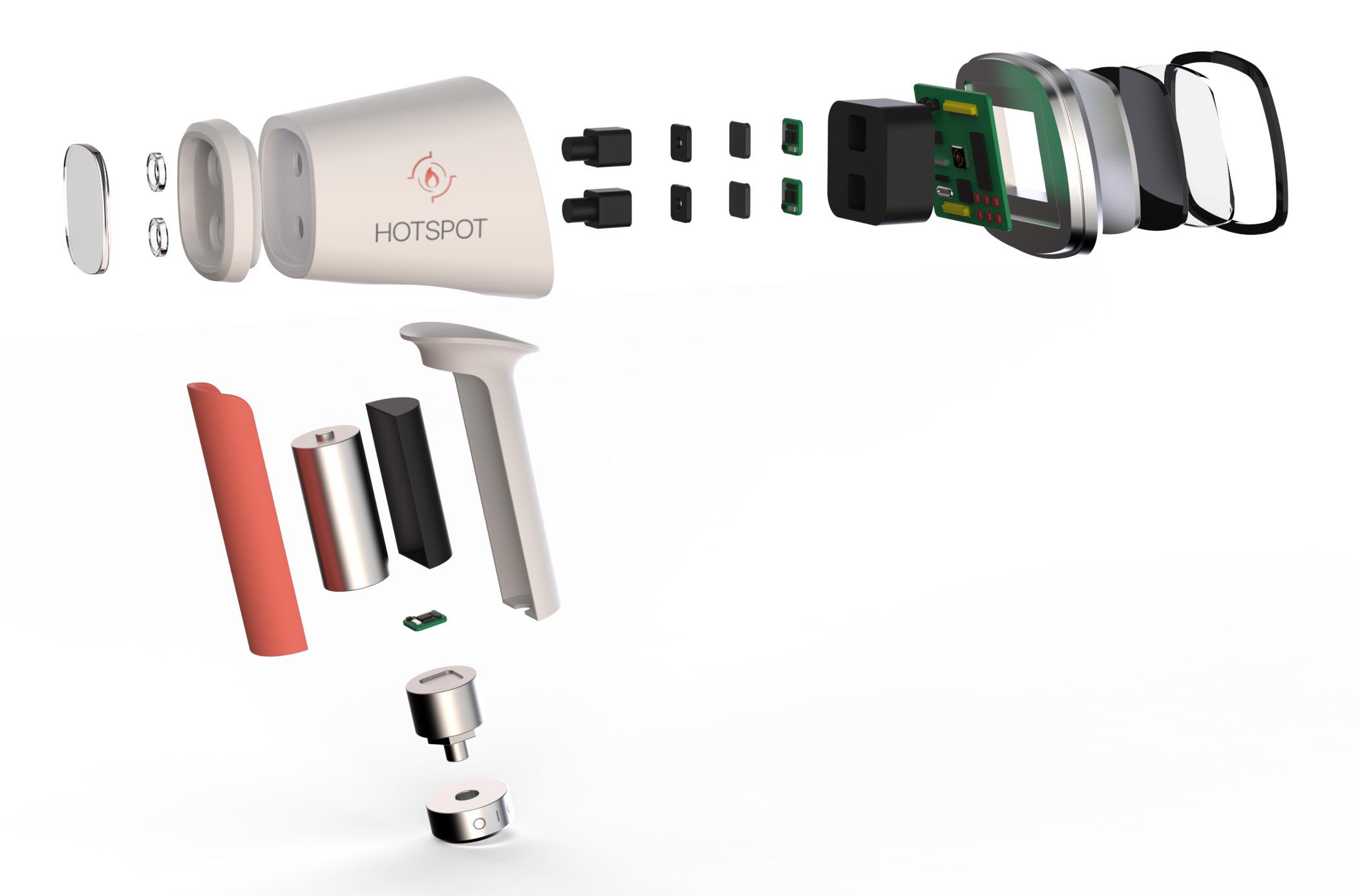
How it works
The customer views the standard display as shown on the right. This is to simplify the scanning experience and allow the user to see exactly what they are scanning.
Using a thermographic infrared camera, HOTSPOT accurately identifies exactly where and to what extent heat loss is occurring.
HOTSPOT utilises image recognition artificial intelligence software. This helps to identify why heat loss is occurring based on machine learning from a database of similar housing.
The scanning process

For users to familiarise themselves with the scanning process, HOTSPOT uses a walkthrough tutorial.
To commence the first scan, the device will ask them to align the reticle with the first door.. Once the image has been obtained, the reticle will turn green to notify the user of success.
During the scanning process, HOTSPOT prompts the user to scan individual aspects of a room, such as doors then windows. This enables them to scan each room methodically to ensure accurate results.
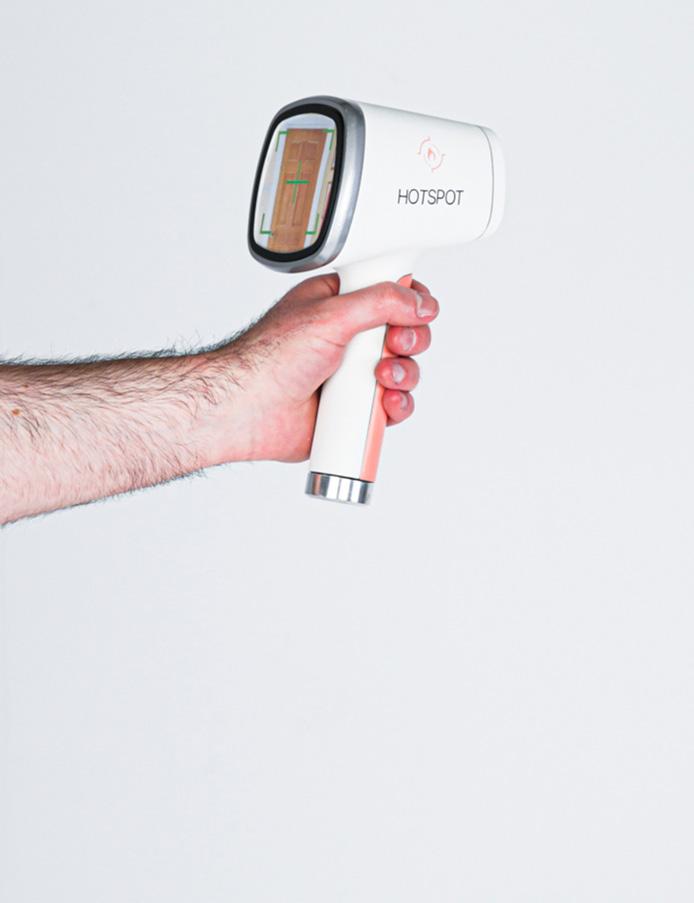
This process is replicated for the windows, then the walls, then the ceilings and floors. The walkthrough, ‘training’ programme acts to scan the first room. After this the user will be free to scan the remaining rooms.
Results Interventions
‘To do list’

The results from the scan of each room are automatically uploaded to the app.
Here the user can see the scans themselves and what the AI has associated as the cause of heat loss.
Additionally the AI prompts the user to consider if there are any natural causes for heat loss to occur, eg, ventilation.
Below the results are the different options recommended by the AI to help resolve the problem.
These interventions are ranked based on price, longevity and installation skill.
The user can then decide which option best suits their individual needs and circumstances.
Once they have decided on which recommendation best suits them, they add the option to their, ‘to do list.’
This allows them to produce a comprehensive list of interventions for each room in their home that they can view in one place.
The report
To help the user fully understand the opportunities to reduce heat loss in their home, the service team provides them with a breakdown/ report.
This report analyses the thermo-graphic scans of the user’s home. Following this, they will study the user’s chosen options and assess their suitability and the likely impact.
The report will help to demonstrate the change in heat retention in the user’s home and how this will increase the thermal efficiency, the cost of interventions vs the cost of previously wasteful heating, and other key pieces of information to provide the whole picture.
Attribution: <a href=’https://www.freepik.com/psd/mockuptechnology’>Mockup technology psd created by freepik - www. freepik.com</a>

Move with the tide
A system of repurposing steel from decommissioned oil rigs, to convert tidal streams into subsidised energy for remote communities in Scotland, creating socio-economic opportunity and contributing to a carbon-neutral future.
Move with the tide is my entry for the 2022 RSA student design competition for which I was shortlisted and then highly commended. The brief was to tackle the issue of decommissioning oil and gas platforms in the North Sea and to apply circular economy principles to deliver environmental, social and economic benefits.

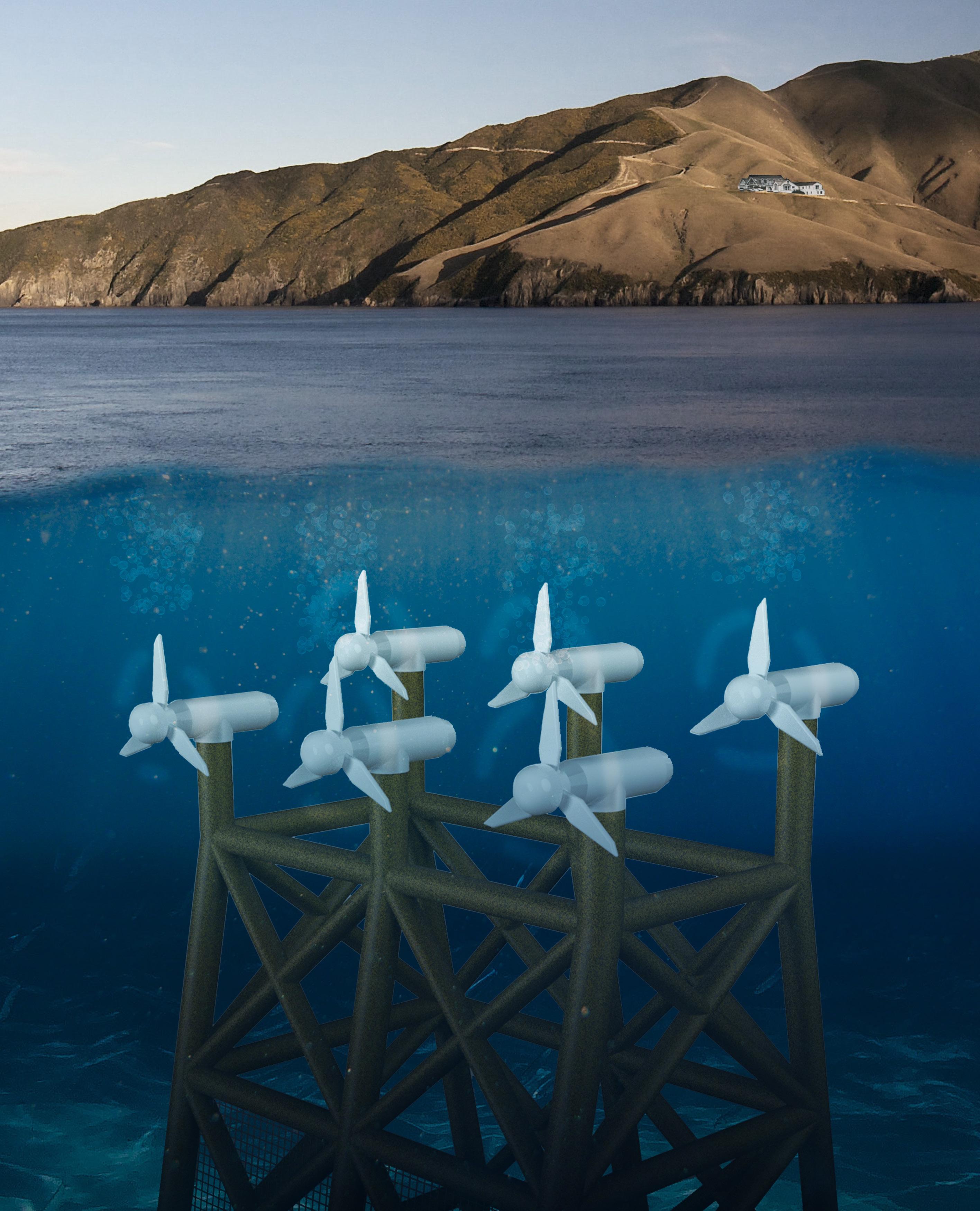
“Four [tidal] turbines off the north coast of Scotland generated enough energy to power nearly 4,000 homes in 2019.” weforum.org
This is the equivalent of powering a town approximately the size of Peterhead in Aberdeenshire...
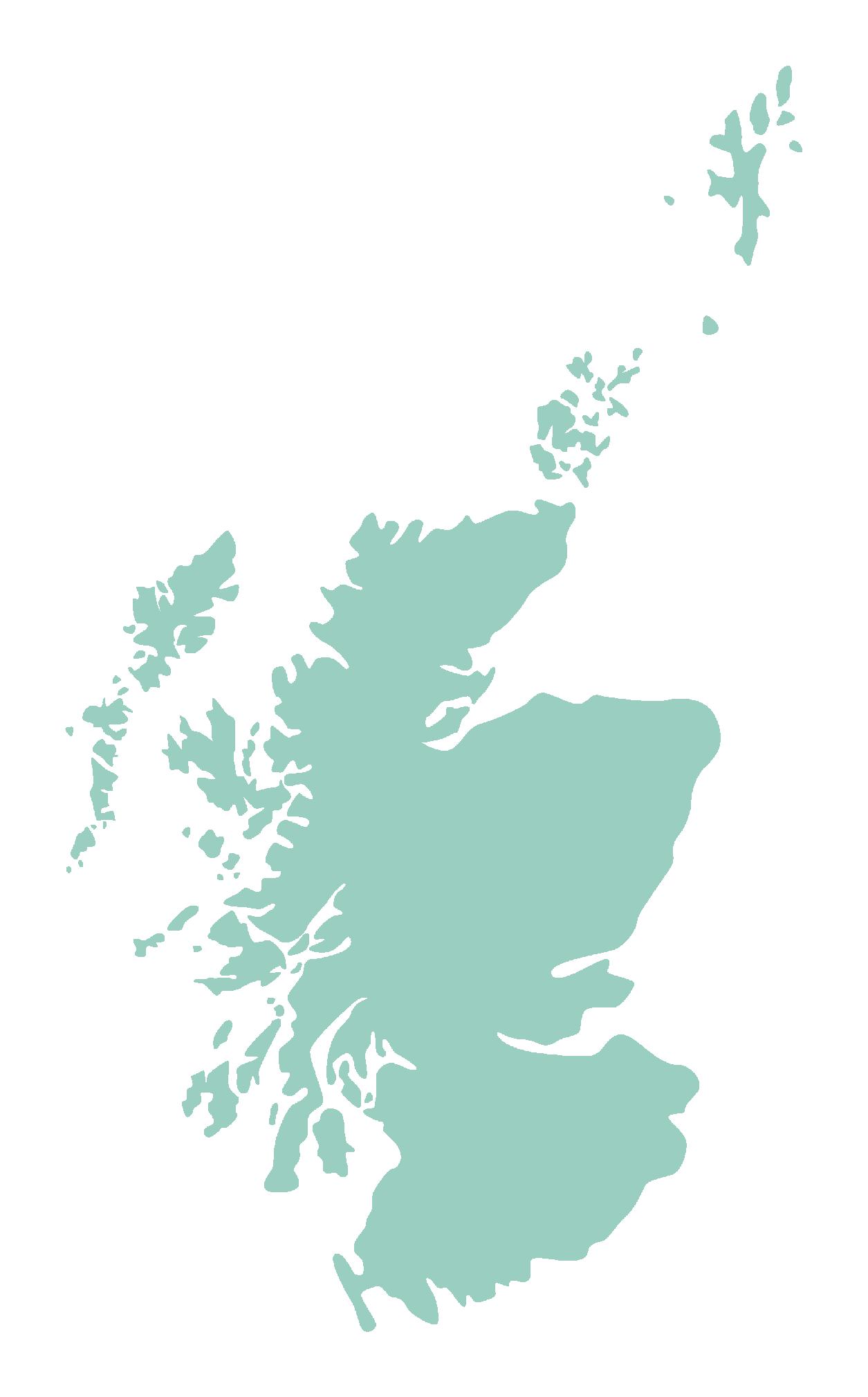
Tidal potential
“The UK’s tidal power resource is estimated to be more than 10 gigawatts (GW), about 50% of Europe’s tidal energy capacity.” www.greenmatch.co.uk
Tidal economy
“the tidal stream industry could generate £1.4 billion cumulatively for the UK and support 22,600 jobs by 2040, focused mostly in Scotland, Wales, and the South West of England.” heraldscotland.com
Scottish application
“Access to good quality digital infrastructure is essential to improving the majority of other sectors on islands, including sustainable economic development, depopulation and health and wellbeing.”
www.gov.scot
Opportunity:
When a group of us visited Able UK in Seaton, where Brent Alpha is currently being decommissioned, observed that the steel jackets were still in large, whole sections and the drill conductor pipe was conveniently cut into lots of even sections.
Can we use these incredibly durable pieces, to develop infrastructure in remote, isolated regions of Scotland?
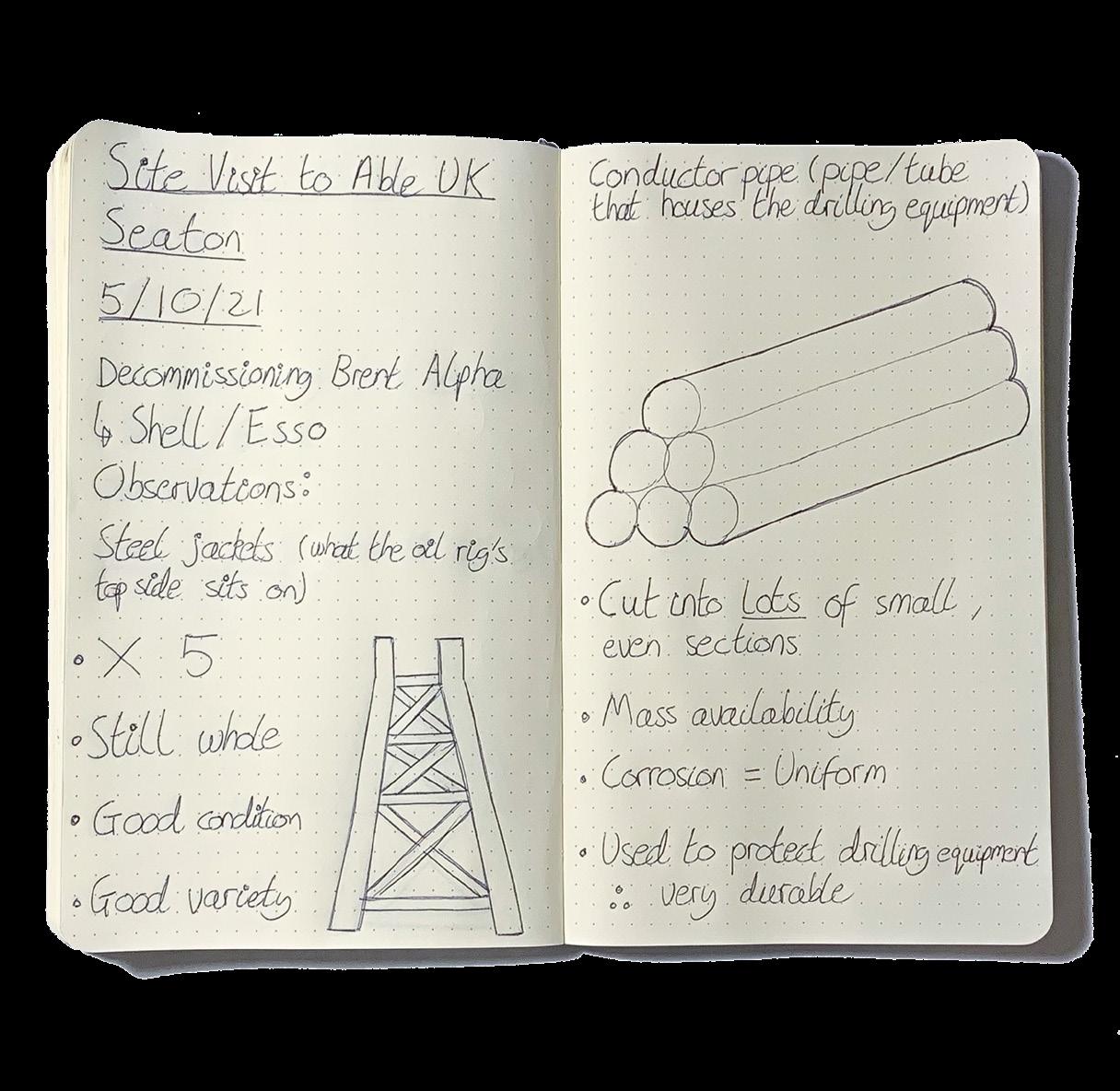
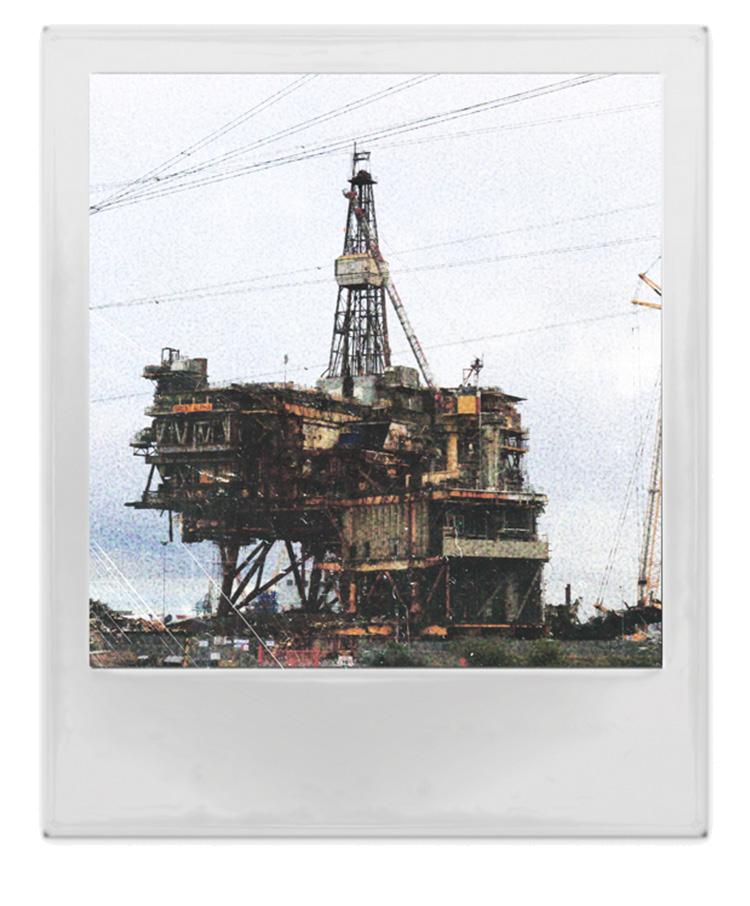


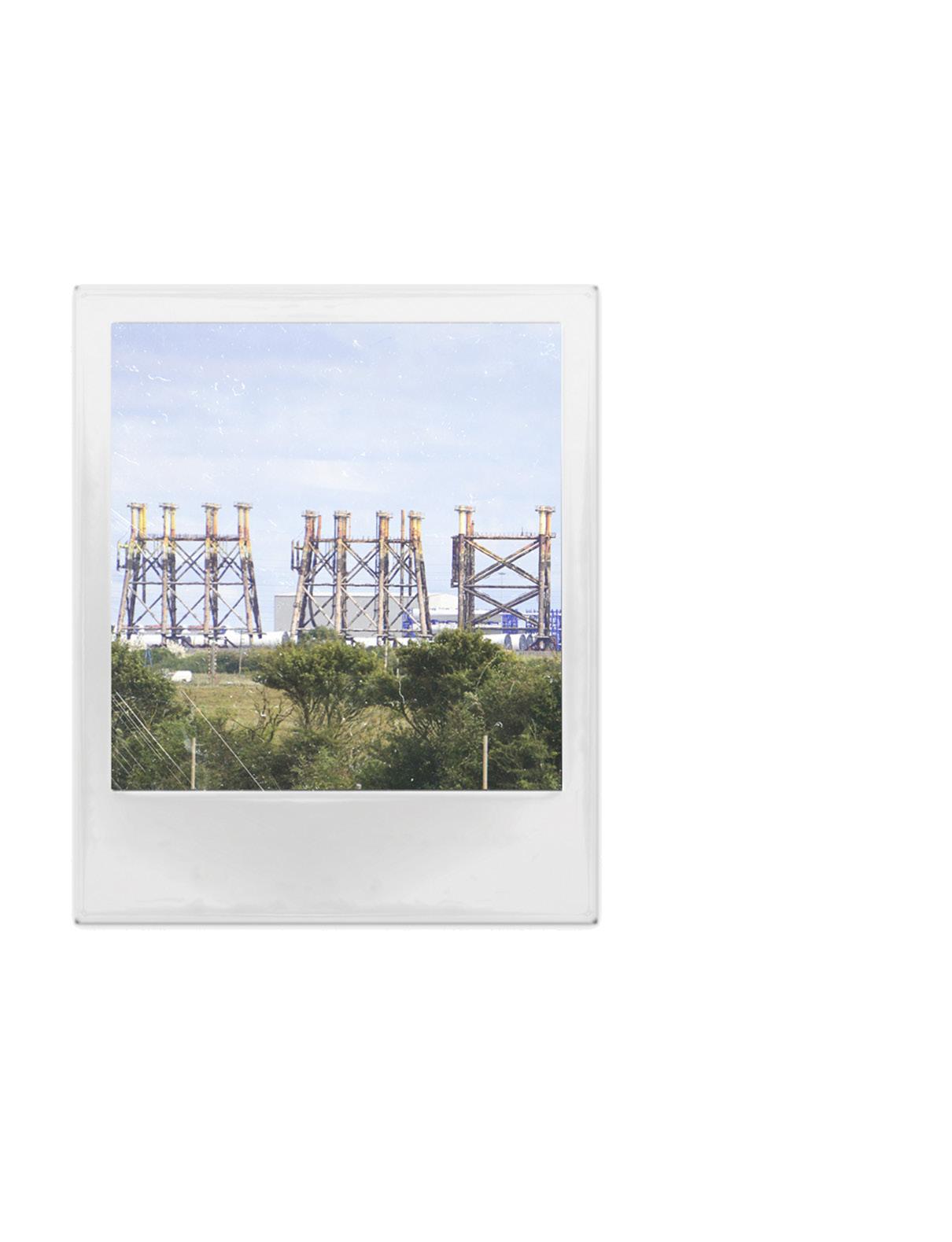
The System 3.

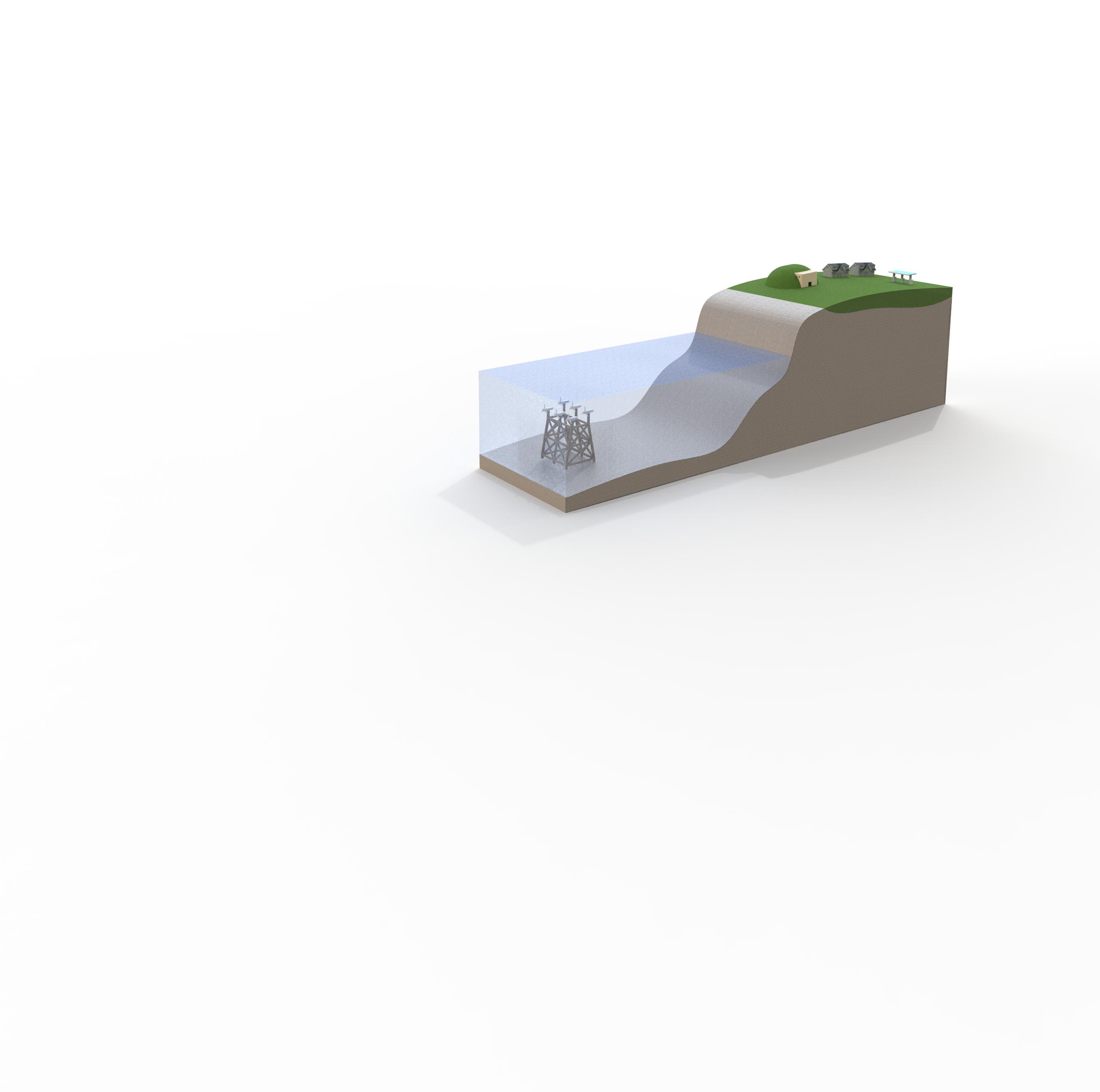
Steel jackets will be transported via barge to the location.

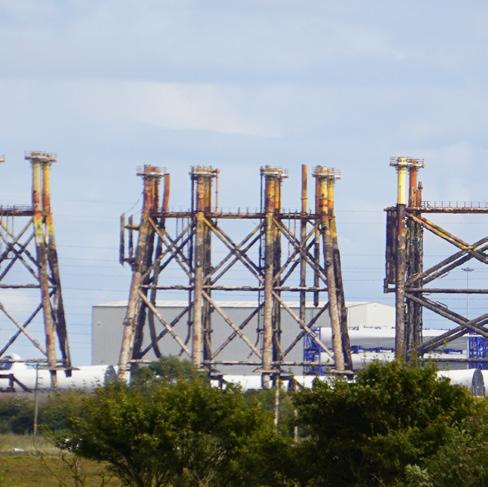

Tidal stream turbines will then anchor one mile offshore using the re-purposed steel jackets.
Tidal turbines by companies such as MeyGen are already in use off the Scottish coast.
Converted energy will transfer ashore via submerged cables and be stored in vanadium cells, within re-purposed accommodation blocks.
The vanadium power plant will provide subsidised electrical energy to the local community. This will develop advanced, ‘green,’ infrastructure.

If it is a small neighbourhood, with 48 volts, 24-30 vanadium cells at 1.5 volts would make the standard voltage.
A quote from my interview with Stefanos Kandilikis, Managing Director of Voltacon Power Conversion, when discussing how many cells would be required to power a small Scottish village.
Repurpose steel jacket sections to anchor tidal stream turbines off the north coast of Scotland.
Vanadium powerplant
Tidal energy will be stored in vanadium redox flow batteries onshore. The accommodation blocks from the rigs have all the desirable amenities so will be repurposed to house the powerplant. It will be clad in locally grown Scots pine and sit recessed in the earth.
The steel jackets are designed to operate in a marine environment for decades, their durability making them ideal for this new application.
Tidal stream turbines, such as the Atlantis 2.0 MW, will use the steel jacket to anchor to the sea bed. Steel collars will mount the turbines on the jacket, compensating for different component diameters.
Large sheets will be constructed using the various handrails found on the rigs. This will promote artificial reefing, increasing the biodiversity of the area.
When compared against lithium ion batteries, vanadium is: “safer, more scalable, longer-lasting, and there’s much more vanadium than lithium in the Earth’s crust.”energypost.eu
Benefits Scale
Environmental
• Tidal energy contributes to a carbon neutral future
• Implementing ‘green’ systems, eg; electric charging
• Reduced carbon footprint during rig decommissioning
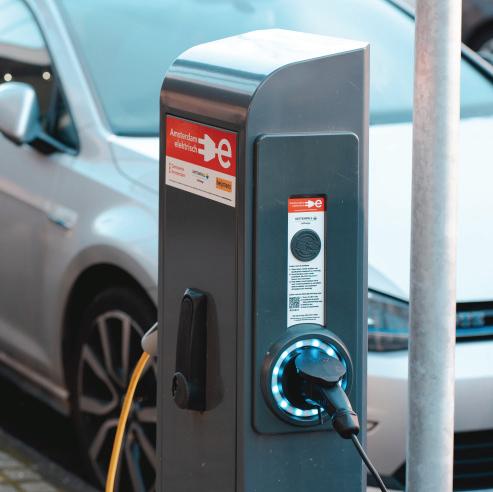
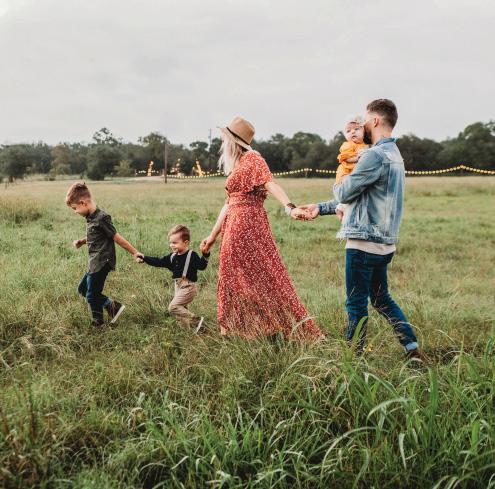

Scotland:
The areas on the right are incredibly remote, often some of the last places in the UK to receive modern development.
Locally subsidized energy could create a more digitally and energy enhanced network of settlements, leapfrogging the rest of the UK.
Migration through subsidized renewable energy could establish an interconnected network of socio-economic development.

International:
The west coast of Africa, south coast of India, east coast of Mexico and east coast of Brazil all have significant offshore oil and gas fields. Simultaneously, these areas have great potential for development.
Social
• New opportunities reduce out-migration of families
• Advanced infrastructure improves quality of life
• Attracts enterprise through desirable living conditions Economic
• Subsidized energy reduces energy bills
• New energy system provides youth employment
• Attraction of new business, enterprise and employment

In Africa, there isn’t the right infrastructure, so they base a lot on smaller community projects with 20-30 houses.
A quote from my interview with Stefanos Kandilikis when validating the opportunity of applying my proposal to areas such as the west coast of Africa.
Upright Go Redesign
A personal project with the aim to redesign an existing product to improve its functionality and aesthetics.
The project simulates the design thinking required to design a Mark II version of a product.
Disclaimer: I have no affiliation with Upright Go nor was I tasked by them to redesign any of their products. This project is simply an academic design exercise.
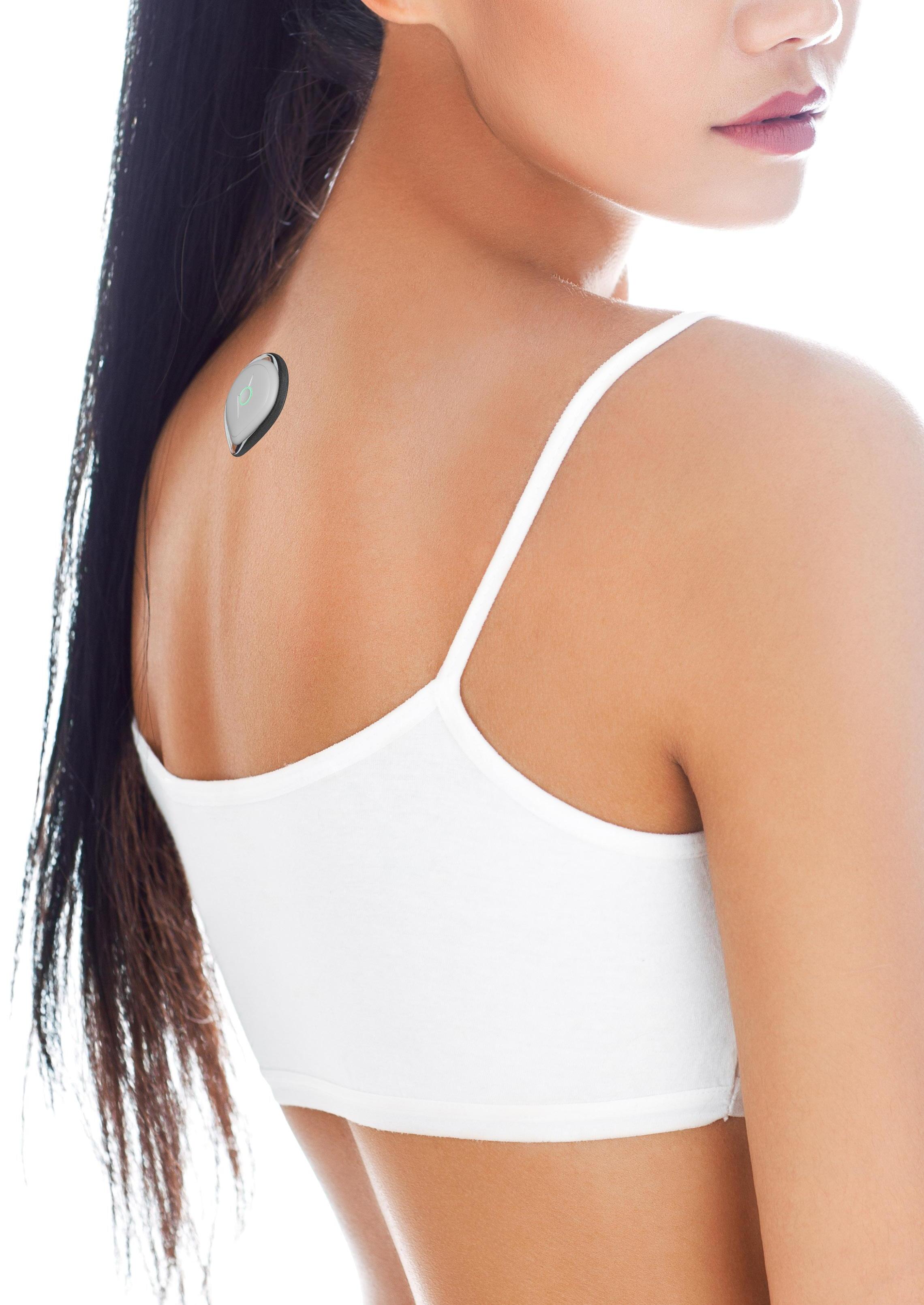

The existing Upright Go (this image and the Upright Go logo used in my work, are used in this project for academic purposes only. The actual Upright Go (as seen above and above only) and its affiliated logos (modified and used in my designs) are the intellectual property of Upright Go.
Upright Go is a posture correcting device that increases its user’s awareness of their posture.
Through vibrations, the user is reminded when they are slouching too much.
However, the existing model exhibits the following problems:
Uncomfortable to wear whilst sitting/lying down
Difficult to attach, stay attached and align correctly
Lacks versatility and the ability to improve wider spread posture due to the use of only one, small sensor.

Opportunities
Dual Purpose
The product should be appropriate and practical for use in both a work and exercise environment
The product must be thin enough to prevent discomfort if the user sits back or lays down whilst wearing the device
Better Attachment
The product’s adhesive must be more comfortable and attach more successfully to the user’s back than the existing device’s incredibly narrow adhesive



Two models
For greater versatility, two models are required.
Standard: Singular piece
Sports: Larger adhesive to cope with more movement and uses additional sensors
Thin profile
The device needs to attach more easily and successfully.
A larger adhesive would provide a greater contact area for adhesion whilst being thin enough to remain comfortable.
Attachable adhesive
An attachable adhesive allows the device to remain relatively small instead of having to sacrifice elegance to accommodate a larger adhesive on its own body.
Using Adobe Illustrator, created 2D renders to refine the concept. began to test the size and placement of the devices and adhesives on the body as seen in the top image on the right.

It became apparent that the shape of the adhesive should match the shape of the device. As the concept was further refined, the form became simpler and cleaner, sporting a much more geometric silhouette.
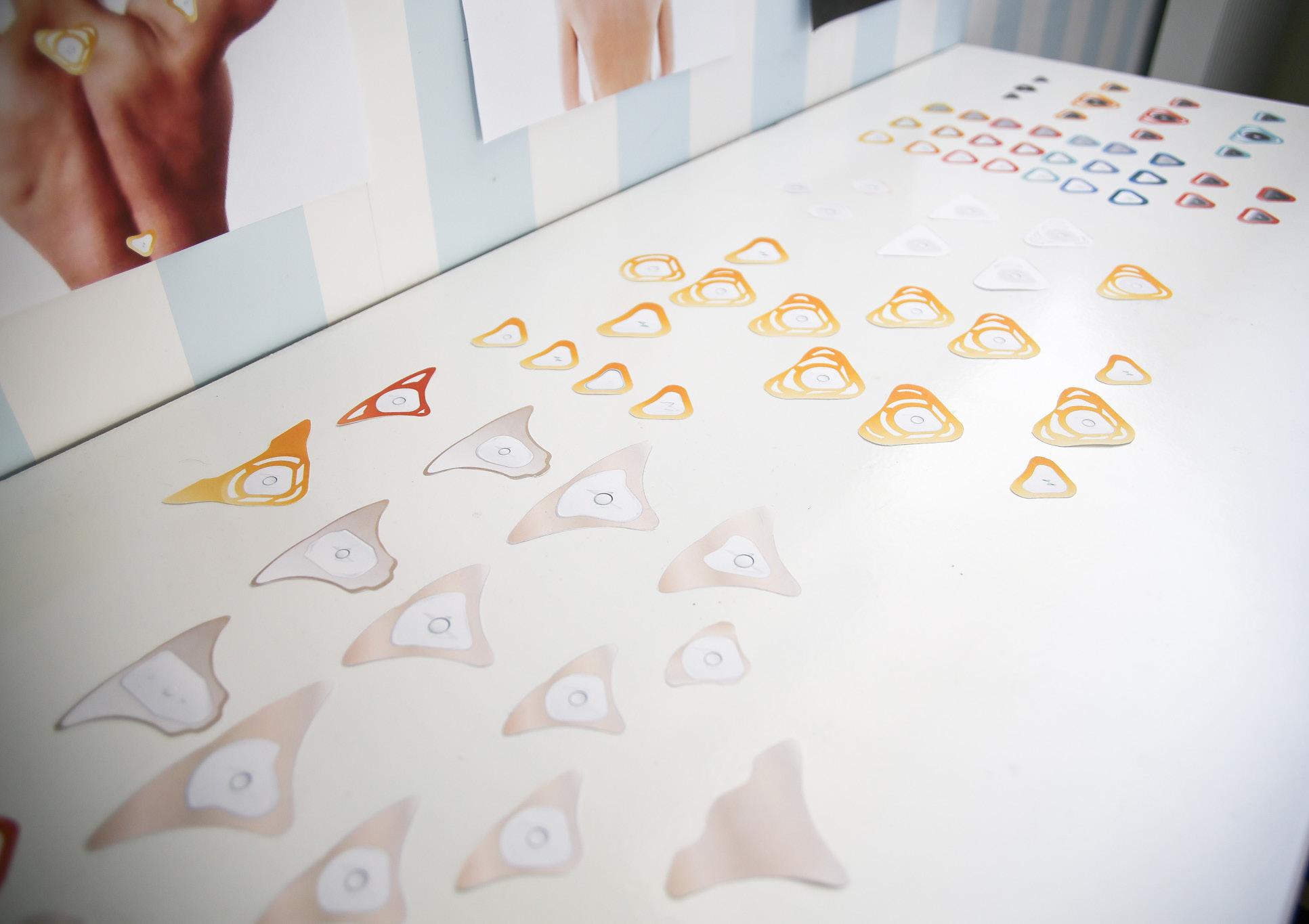
Standard Model
Transparent silicone adhesive for more subtle appearance
Central function button
Injection moulded PVC,
body with textured silicone grip



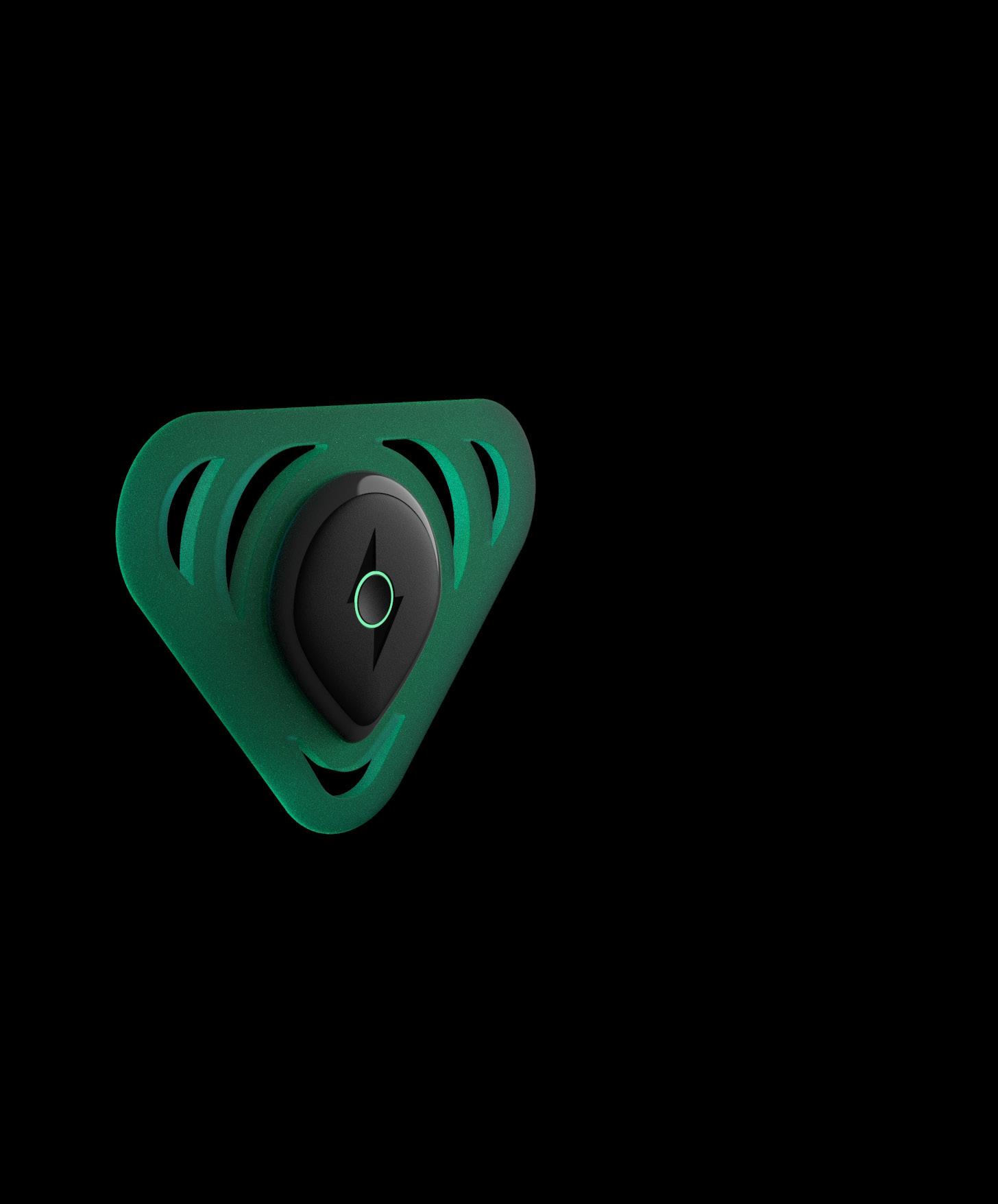
Thin and flexible silicone adhesive for easier, more effective attachment to user’s back
1 2 3 5 4
Hold main function button to activate device
Remove seal on back of adhesive
Retract shoulder blades together Place device within, ‘V’ of upper back Attach and calibrate additional sensors
Resonate
Resonate is an interaction device that allows the user to connect with the outdoors by reliving their holiday memories through greater immersion.
By recording soundscapes of nature, Resonate provides users the ability to, “capture the moment,” in a more convenient and tangible way.
The brief required a short video prototype of the interaction. Click the play button or use the following link: https://youtu.be/eN5WRKoRT74
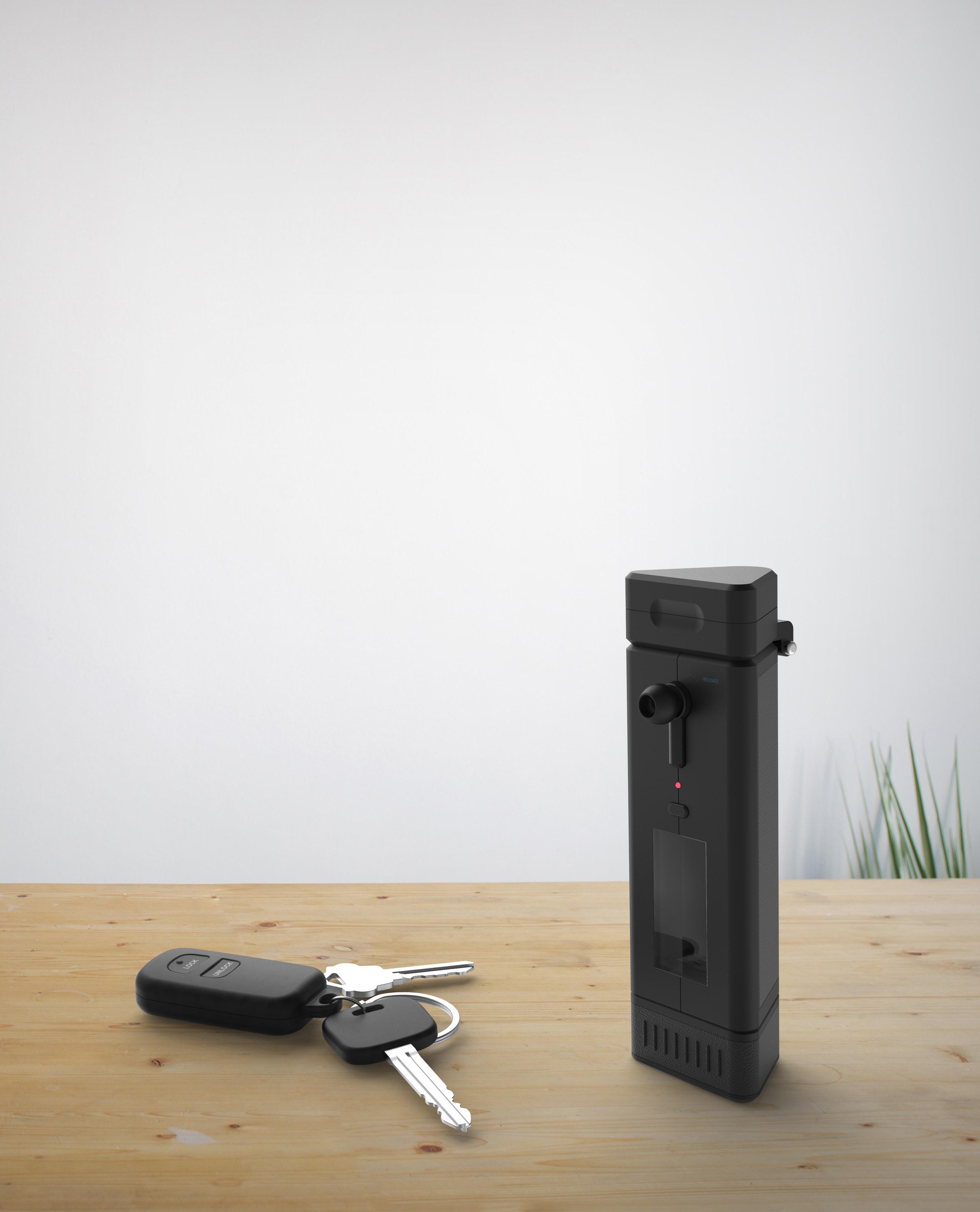
How can we connect more with the outdoors through reliving holiday memories in a more immersive way?
Listening to nature
“calming nature sounds and even outdoor silence can lower blood pressure and levels of the stress hormone cortisol, which calms the body's fight-or-flight response” health.harvard.edu, July, 2018.
Reminiscing
“Nostalgic reminiscence helps a person maintain a sense of continuity despite the constant flow of change over time. It is reassuring to realize how rich our lives have been – how much joy, hard work, success and excitement we have experienced” apa.org, 2011.
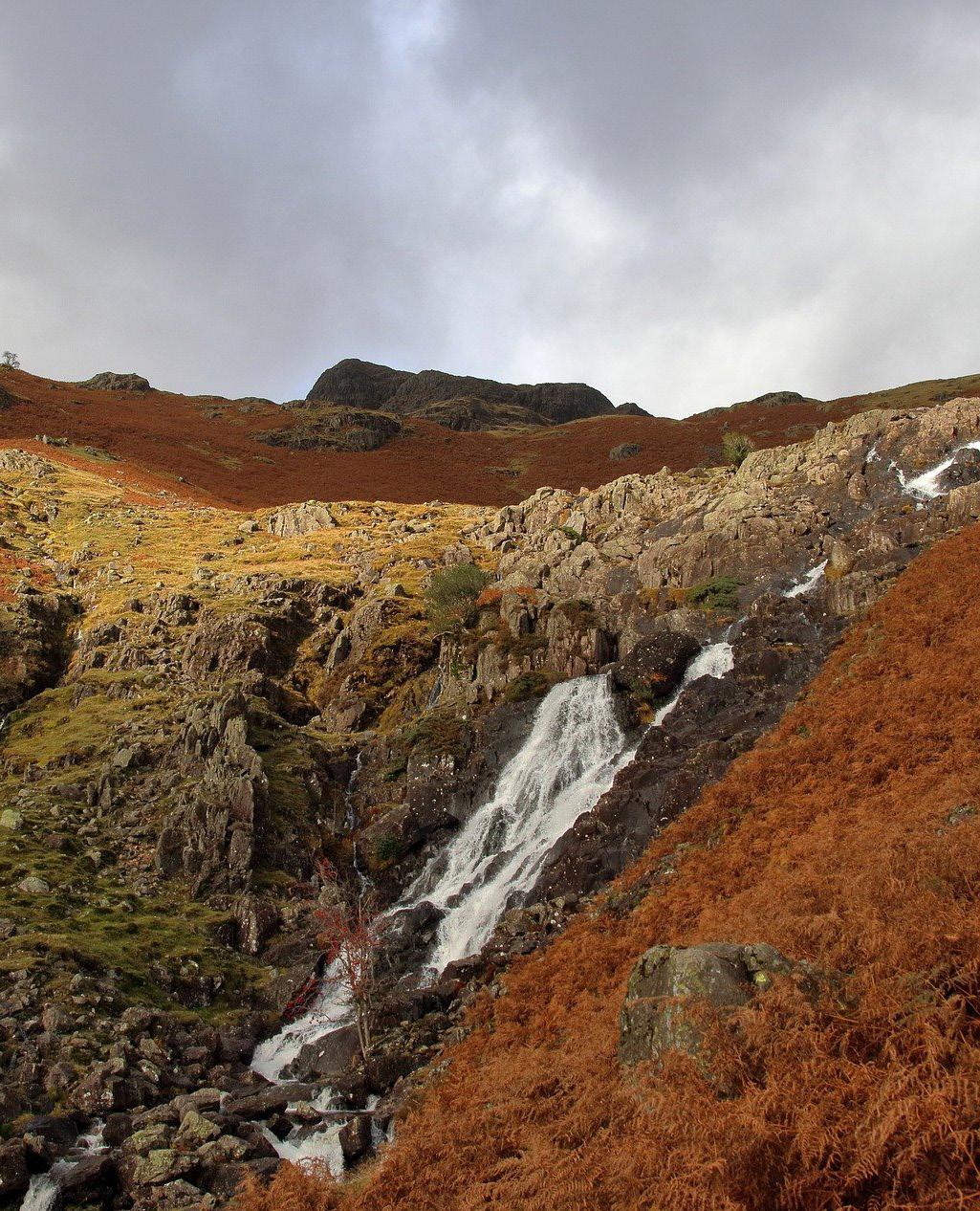


‘Bottle the moment’
Enhanced relaxation
Physical recordings of memories
The main interaction simulates the metaphor of, ‘bottling a memory.’
By lifting the lid, the device begins recording and stops when the lid is closed
By recording sounds they have captured on holiday, the user is greater immersed in their holiday memories.
They are easily transported back to a more relaxing time, helping them to relax in the present
Physical storage for memories allows rapid access to recordings, photos and souvenirs for specific memories.
Eliminating searching through old photos and recordings on their laptop or phone.

Product and interaction refinement through iteration.
Opening the lid, “captures the sound,” and starts recording. The rotating dial and sound levels window help adjust the sound. Closing the lid stops recording and, “bottles the sound.”
James is walking on holiday and hears a sound he likes
He inserts the attached earphone and opens the lid to start recording
James adjusts the sound levels using the dial and levels screen to produce the optimum sound
James closes the lid to stop recording and playback commences, allowing him to check the sound quality
James photographs the location and collects souvenirs to remember the location by
After collecting all sounds on holiday, he uploads the files to the cloud. The device prints the cloud location of these files onto an RFID sticker for file retrieval later
At home, James places the souvenirs and photos in a compartment within his memory box. He attaches the RFID sticker to the photo and adds a tack to the map to show where he’s been
When James wants to relax, he scans the RFID sticker on the playback device to retrieve the sound files from the cloud and commences playback
James listens to the sound files whilst studying the photographs and souvenirs from holiday, combining touch, sight and sound
As James associates this memory with relaxation, he can easily relax by reliving his positive holiday emotions




